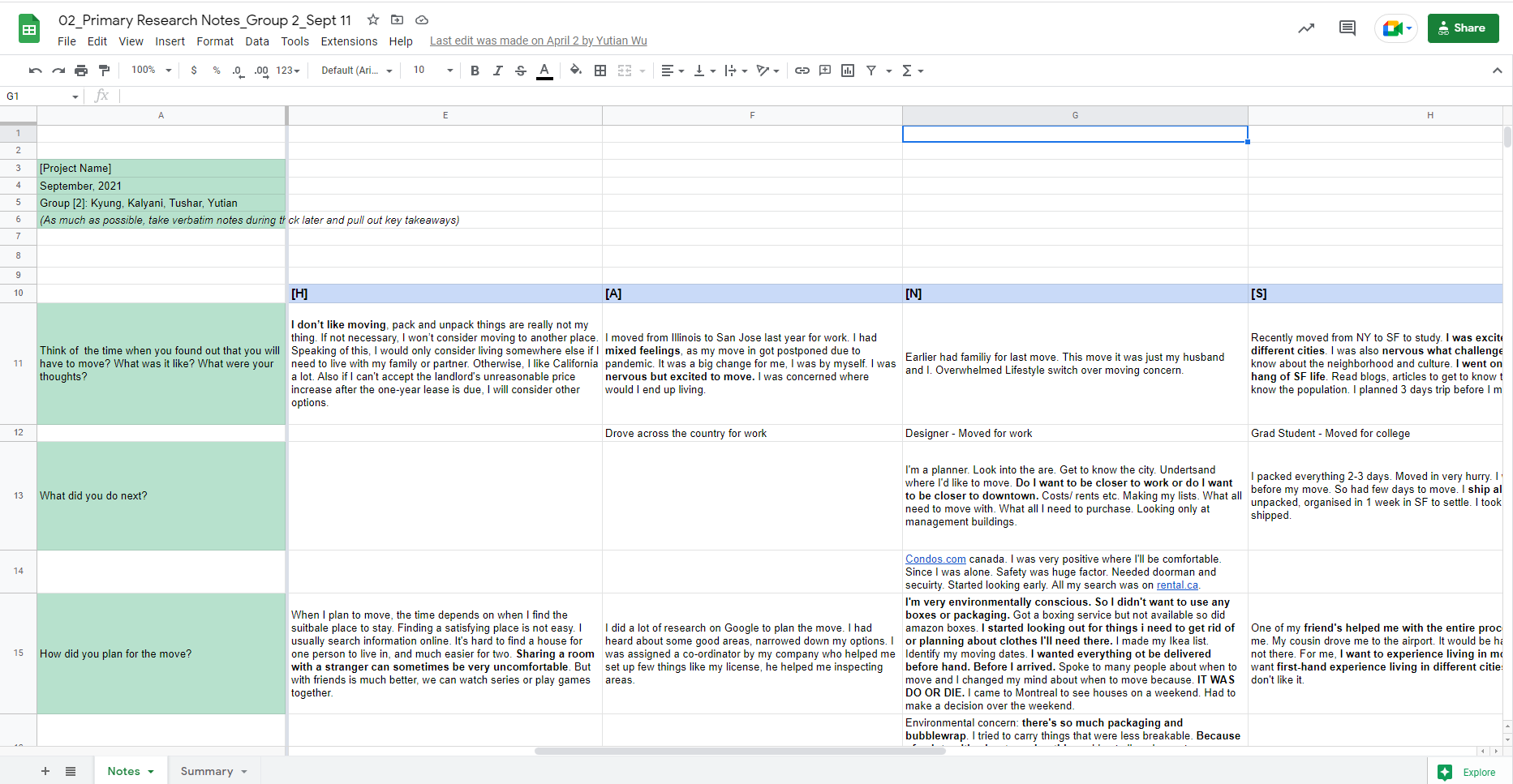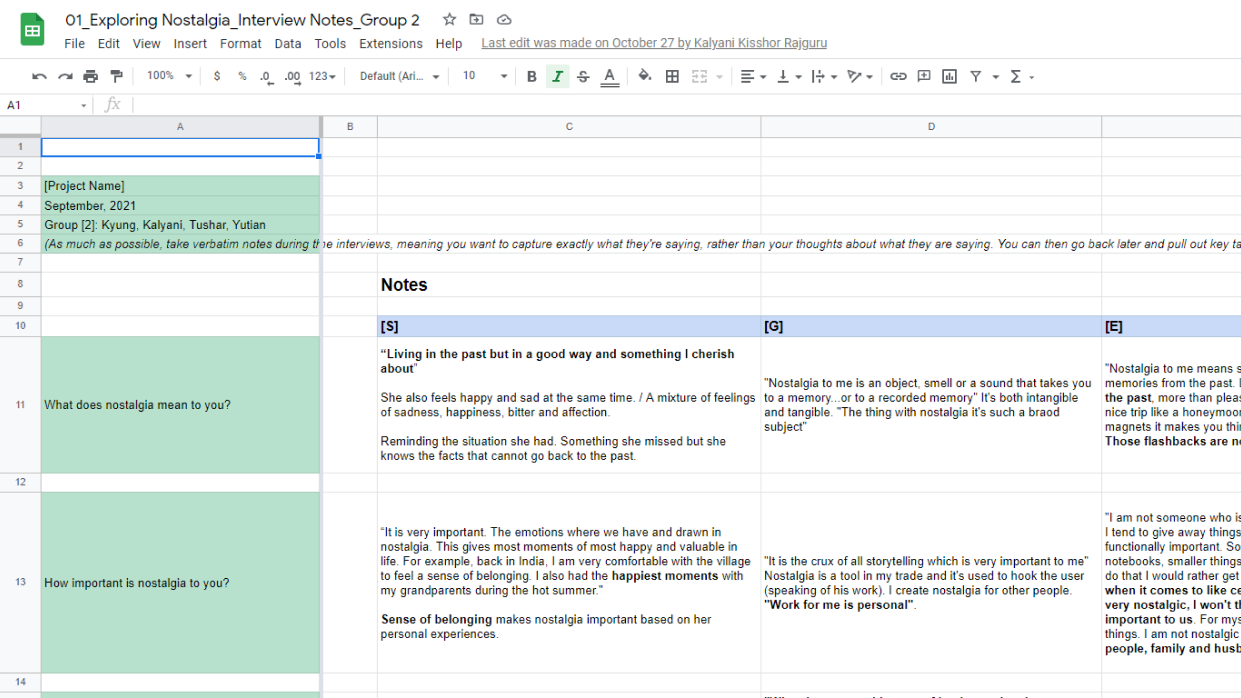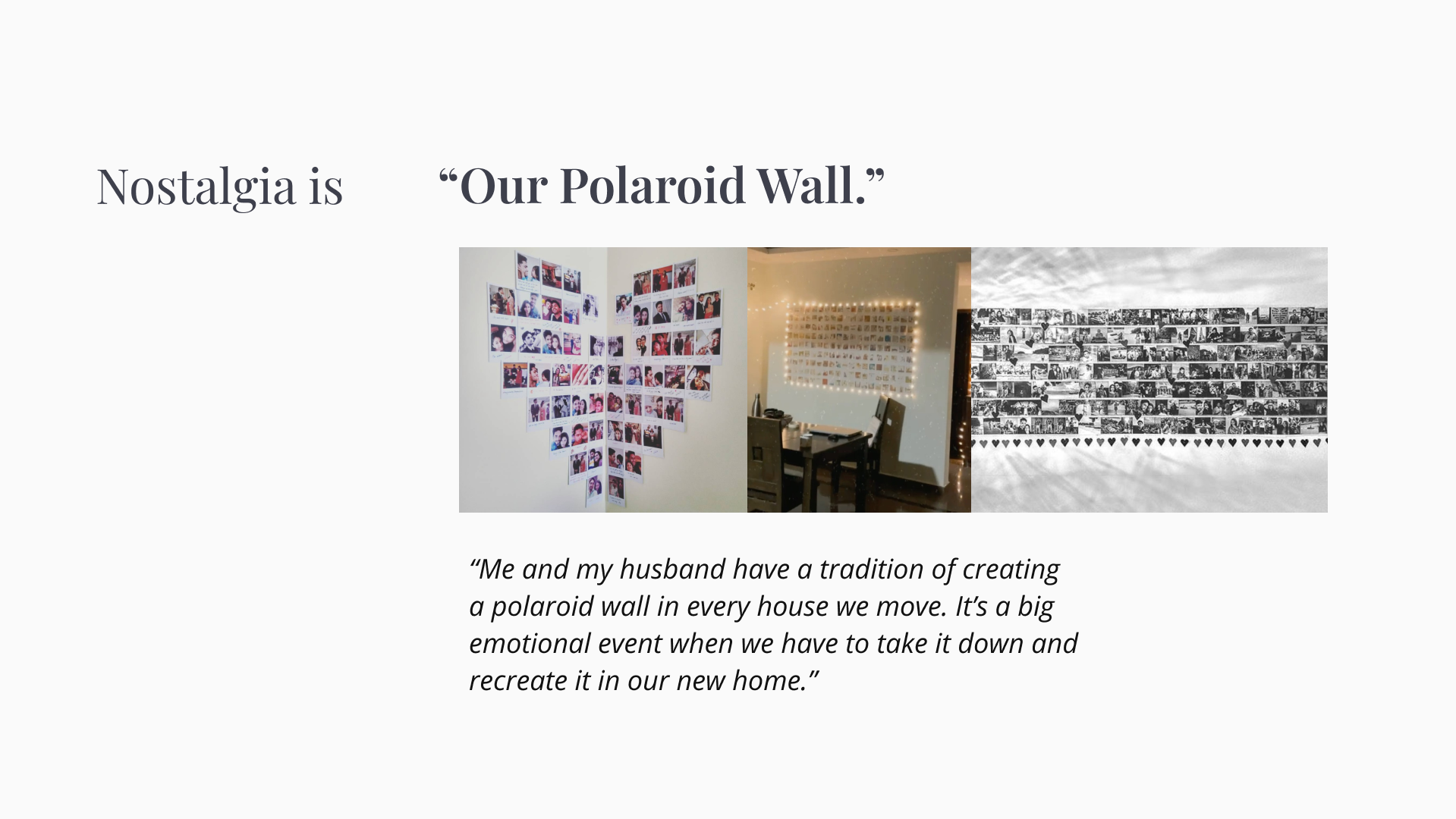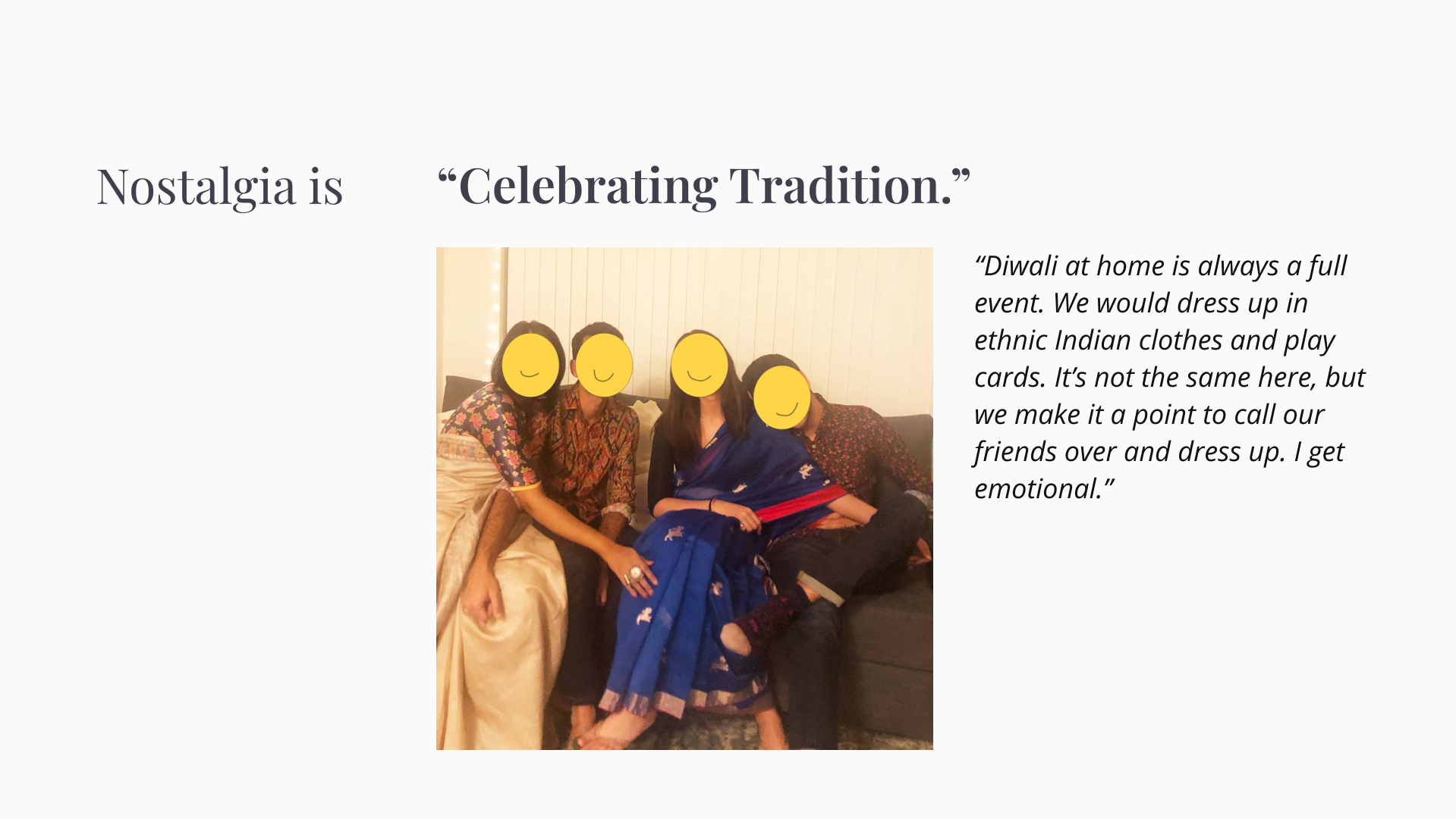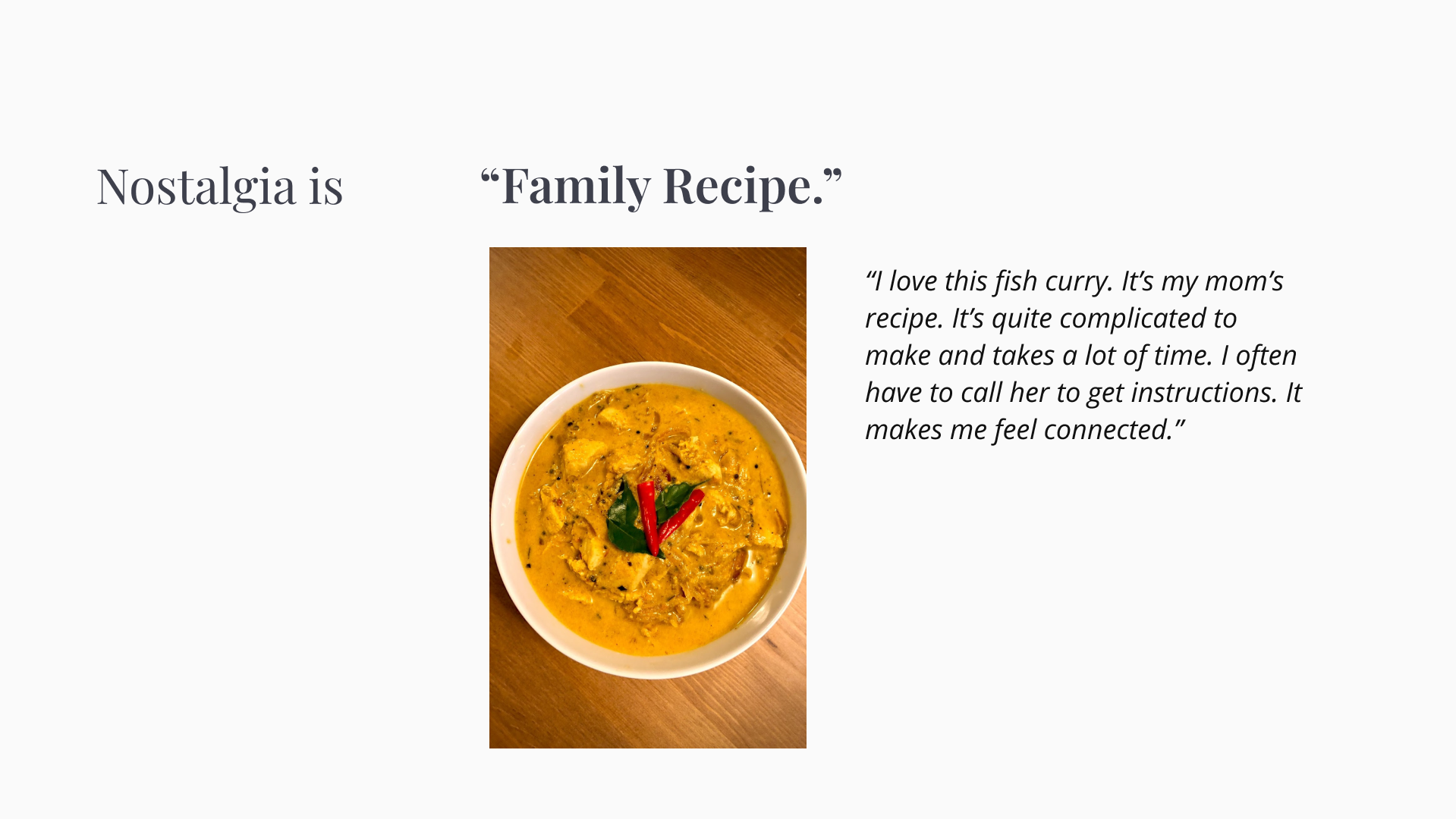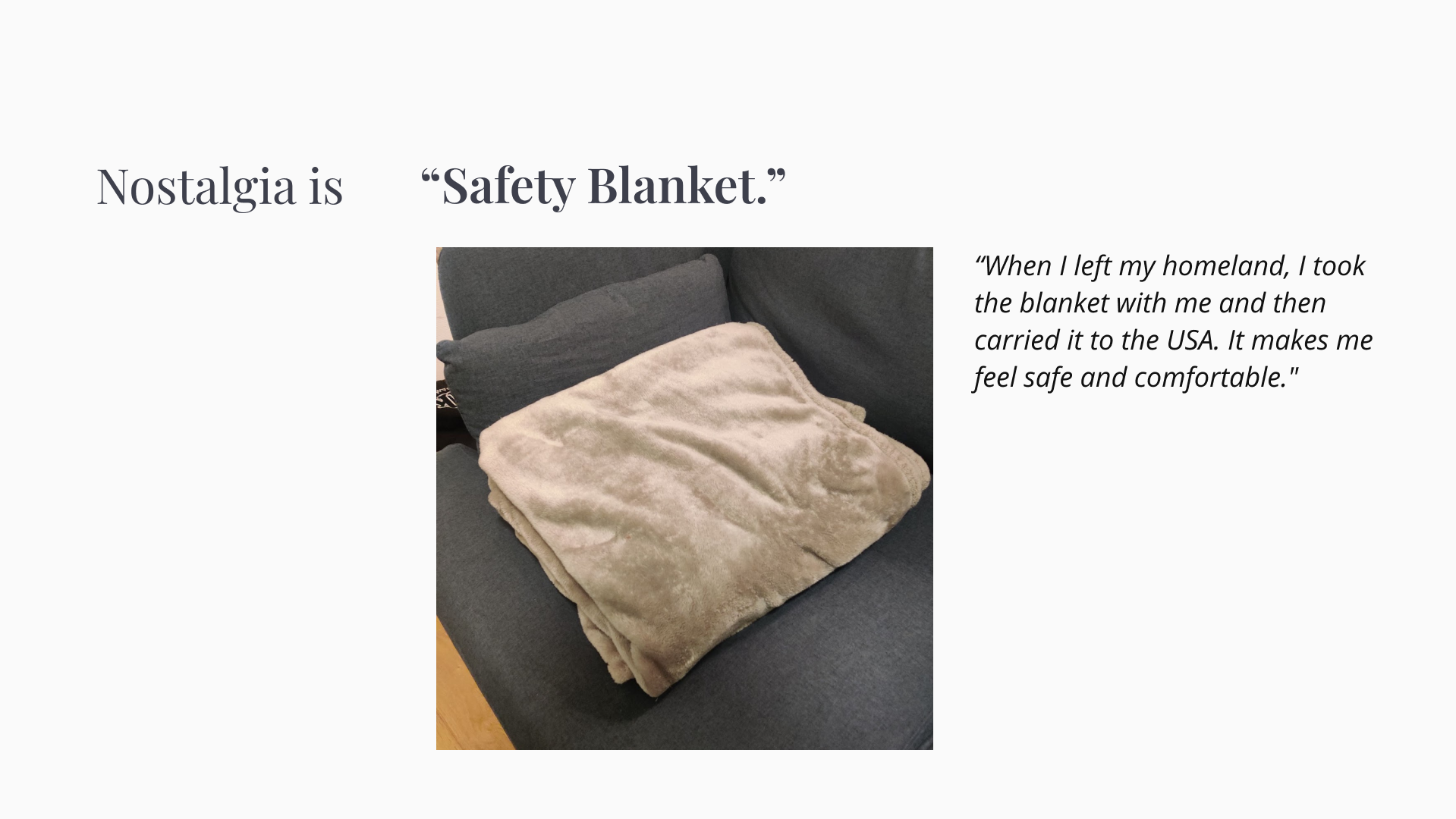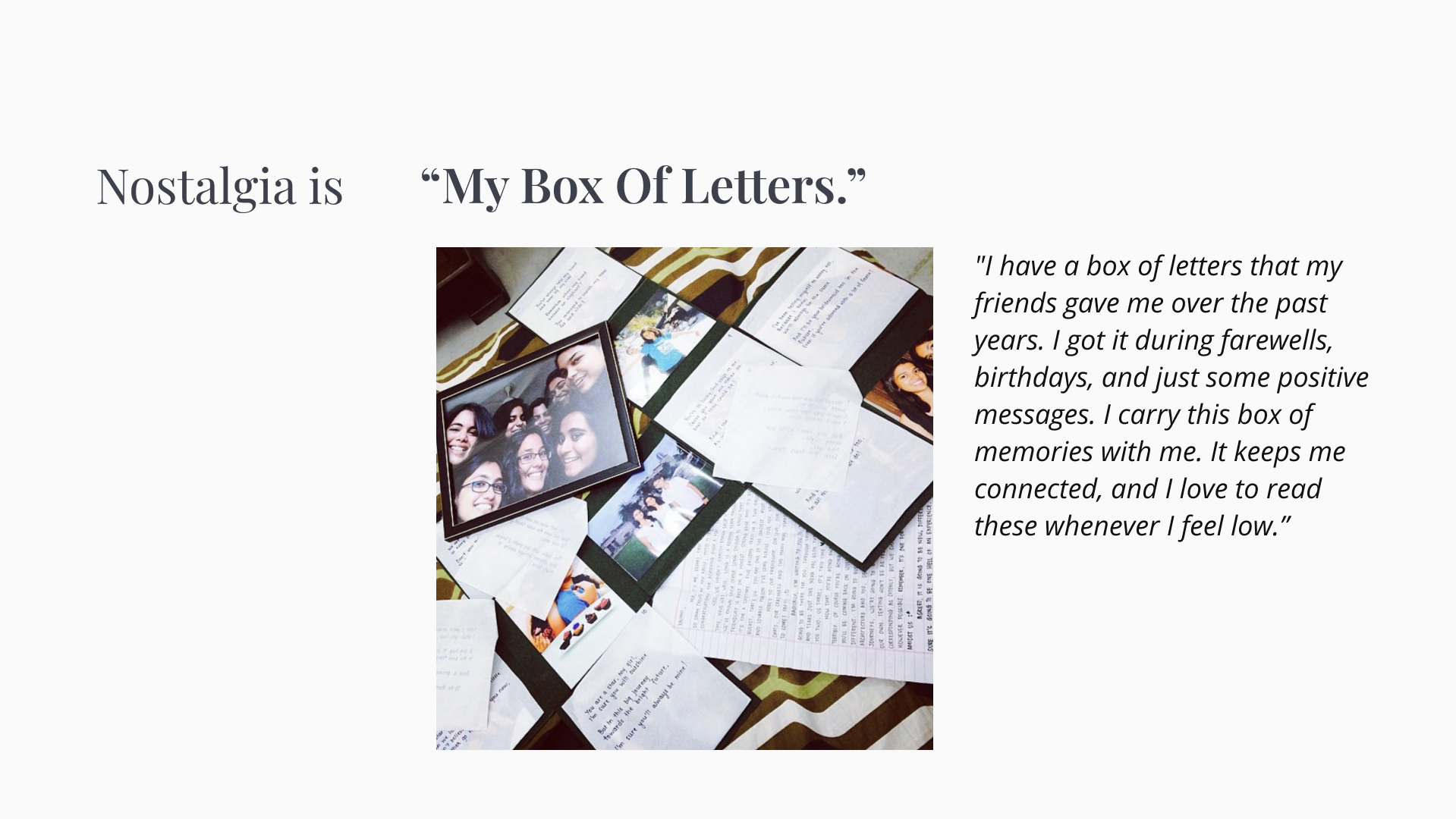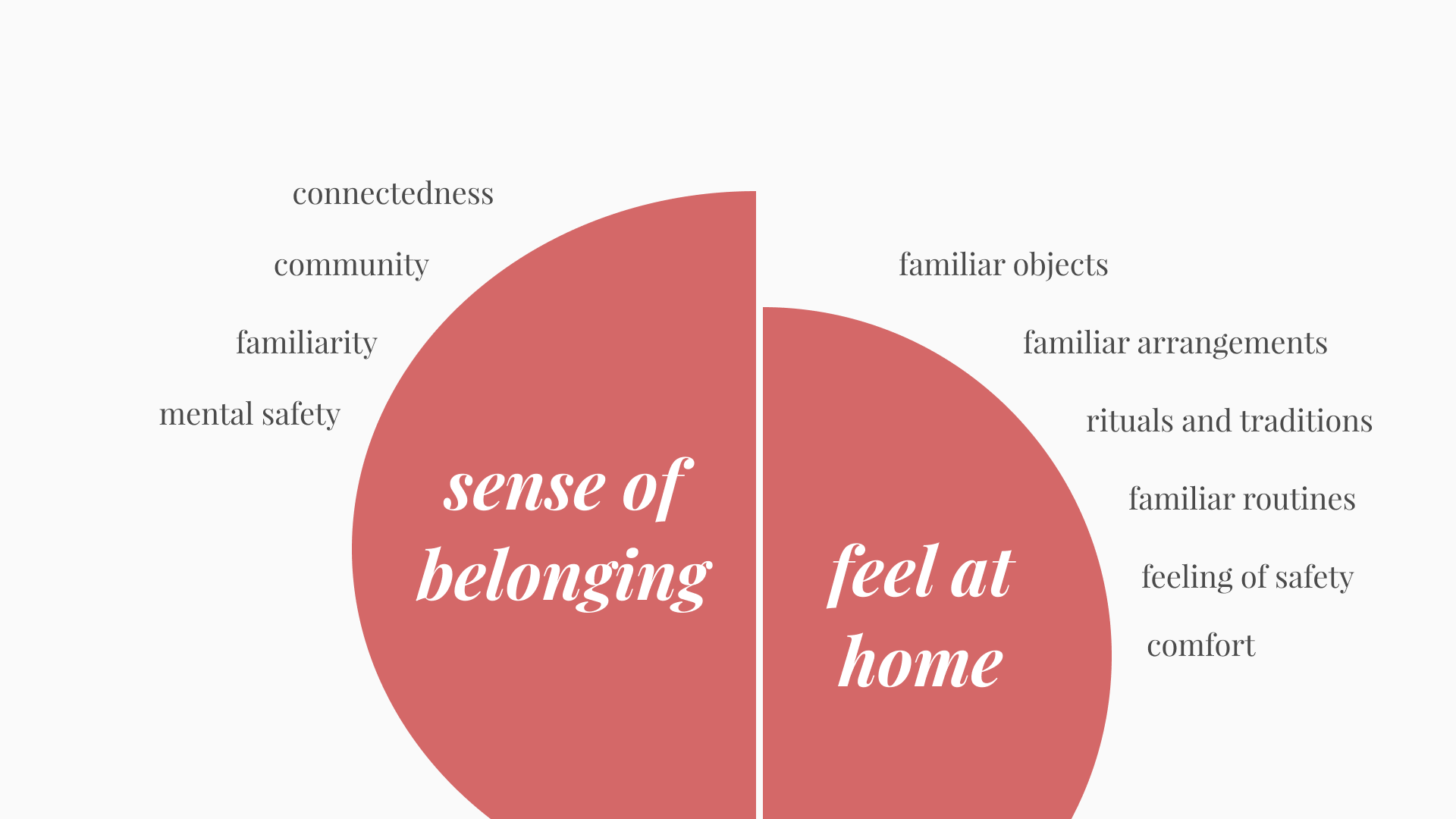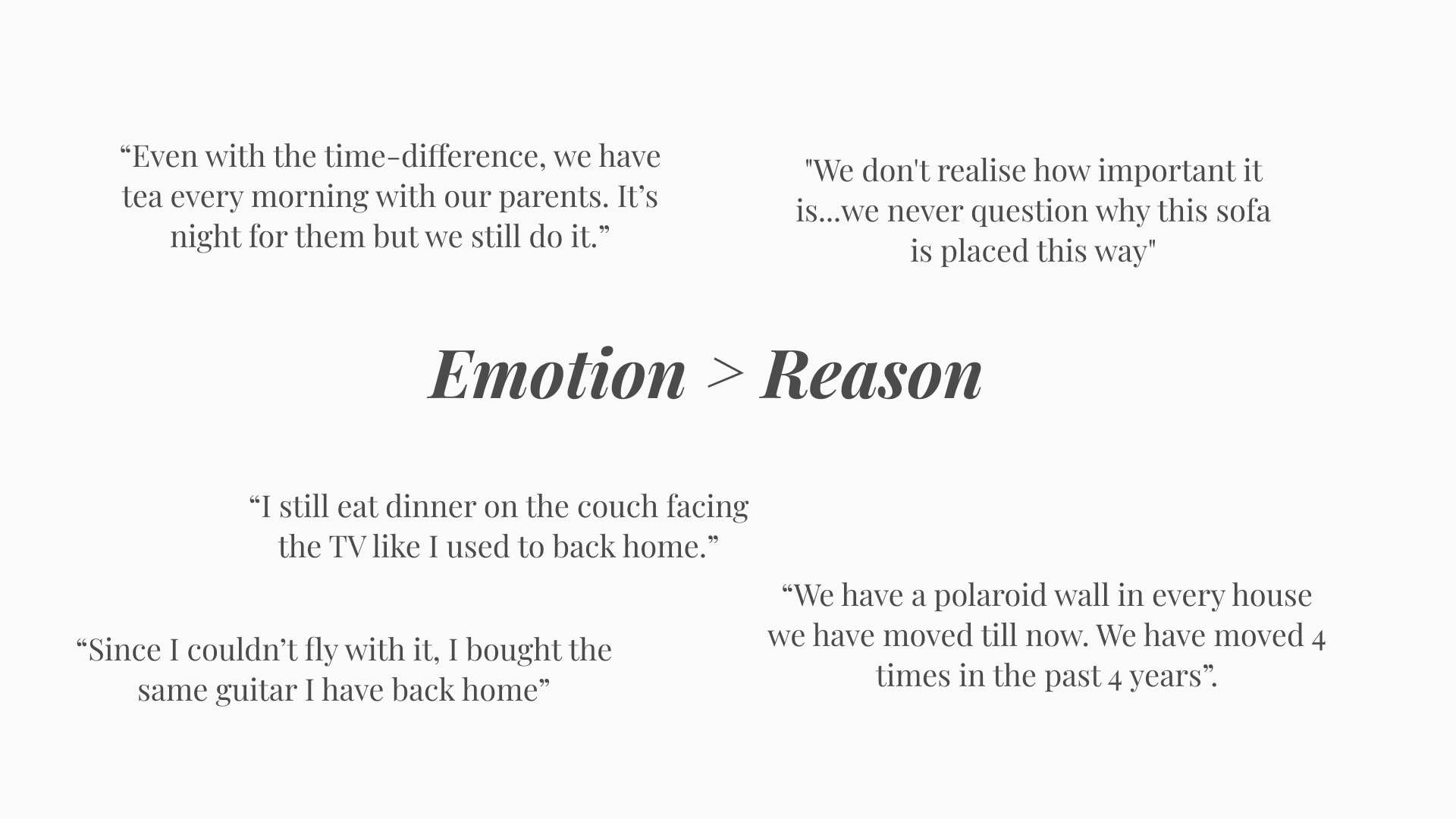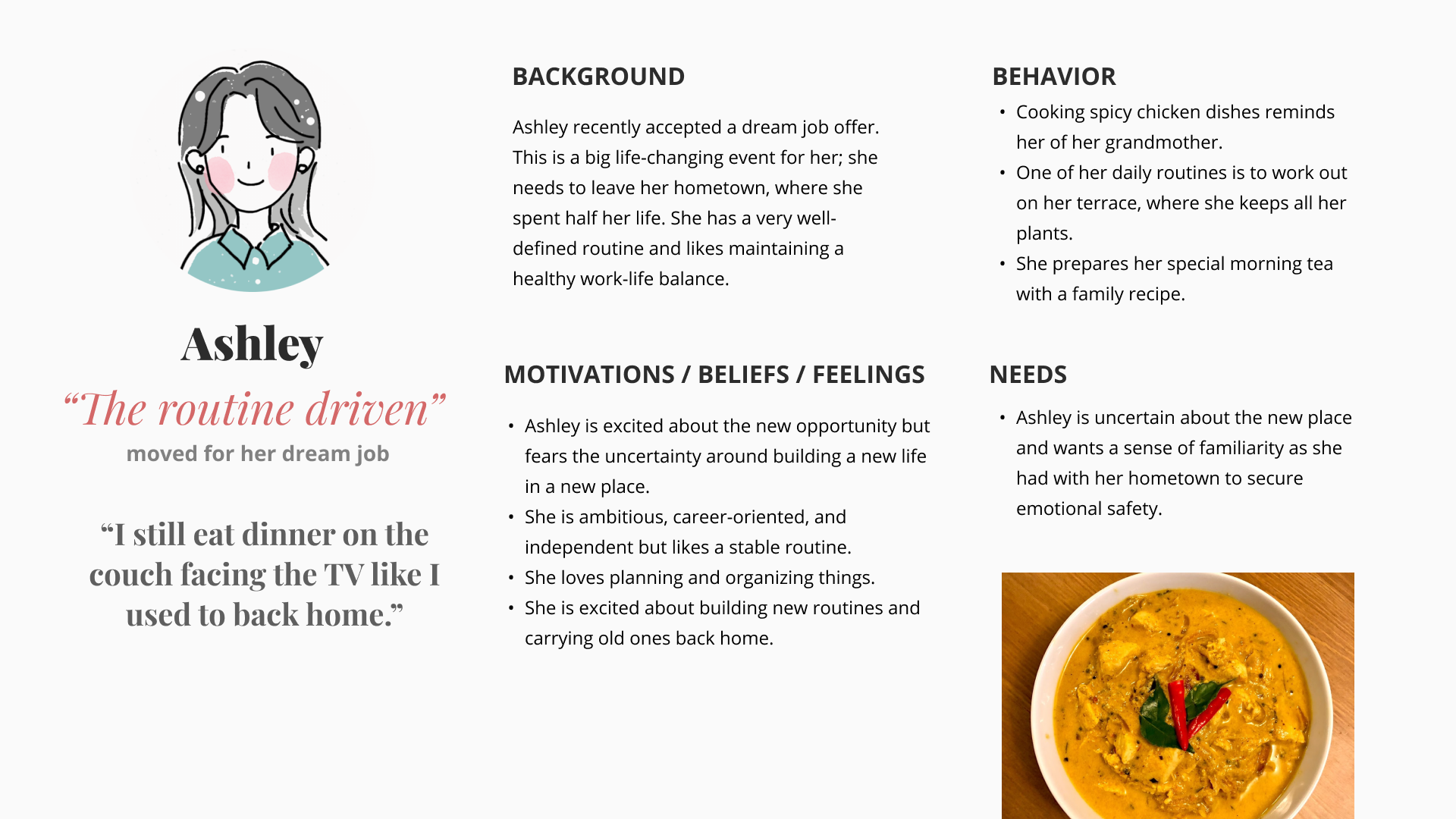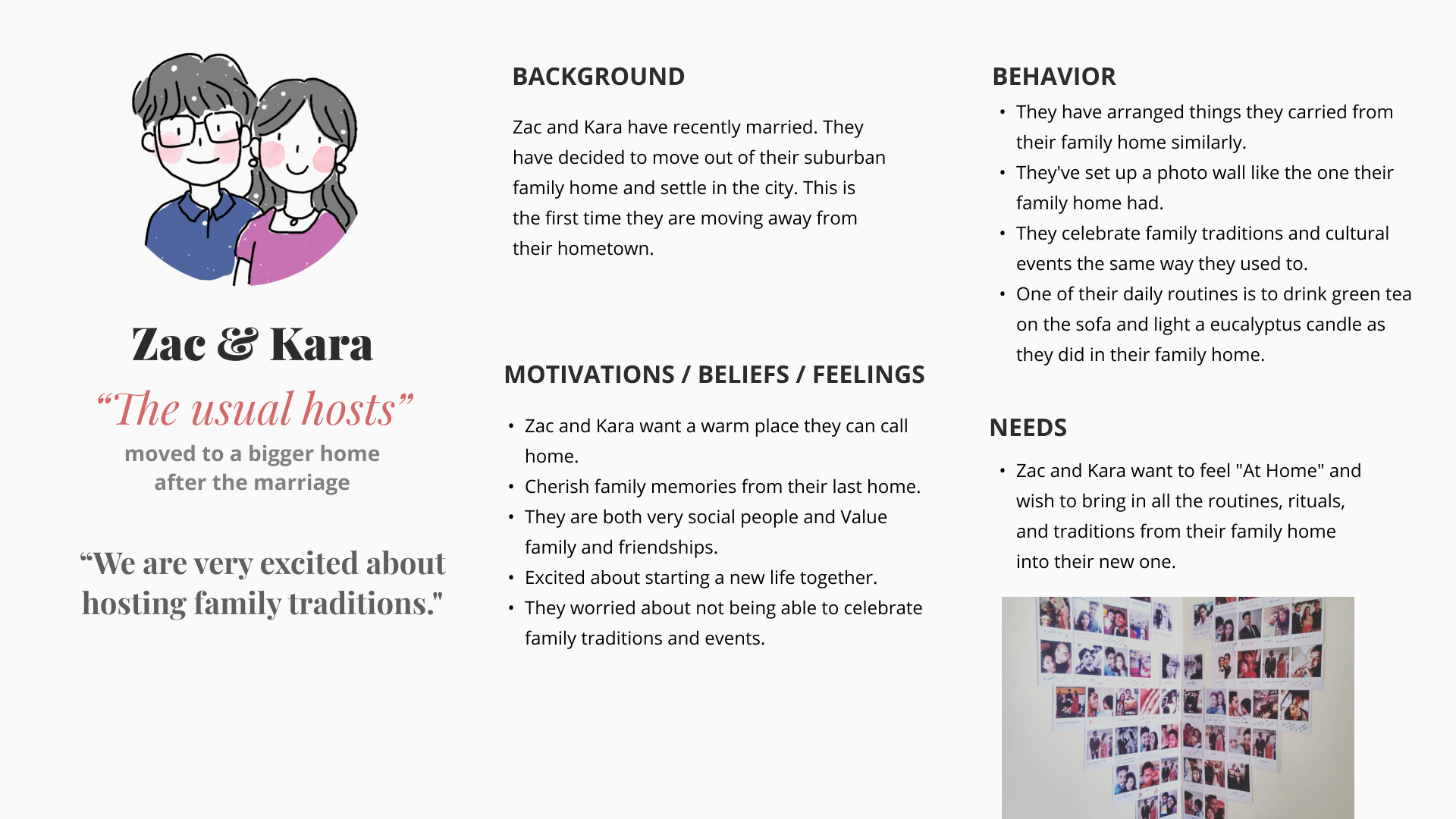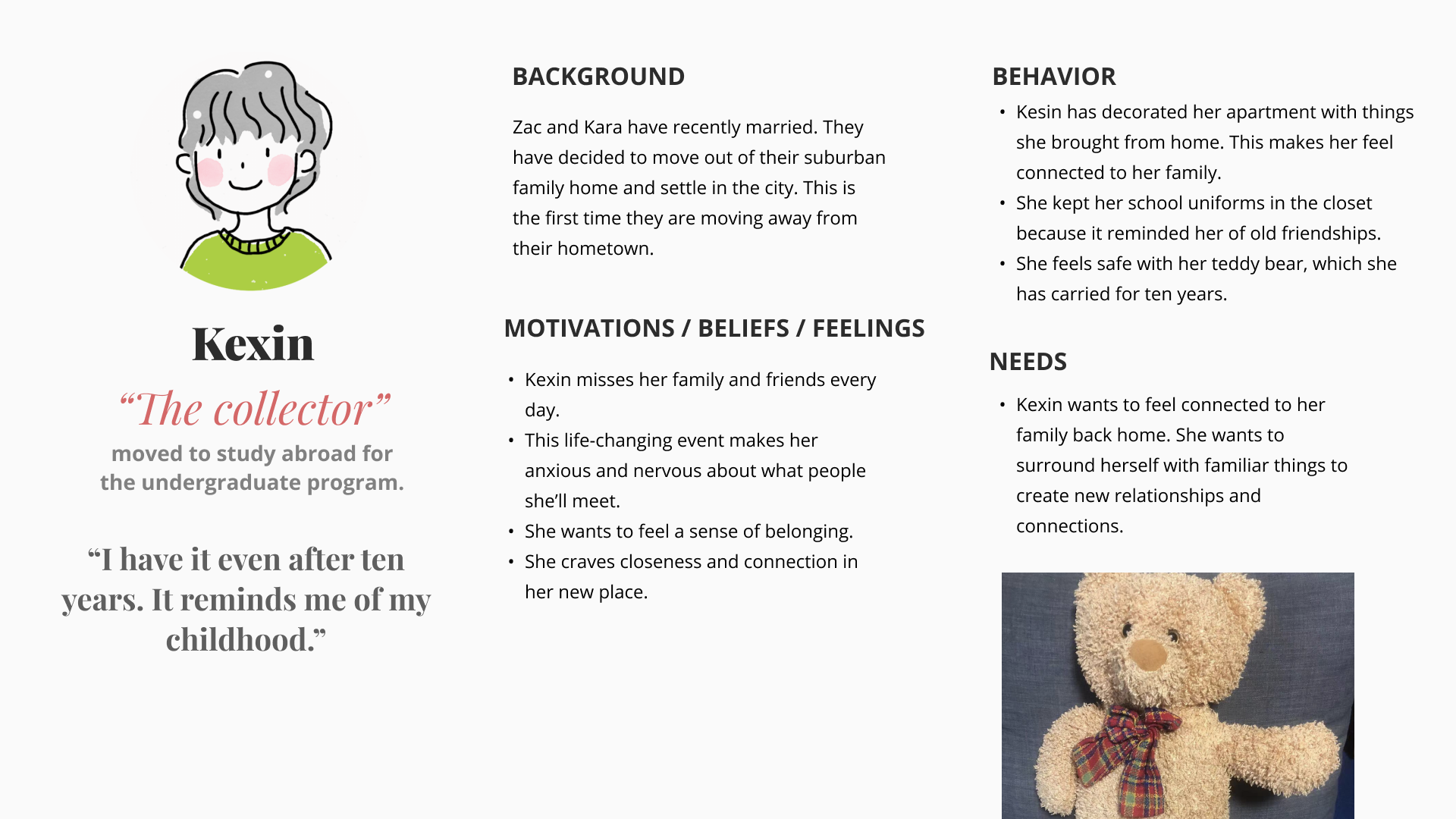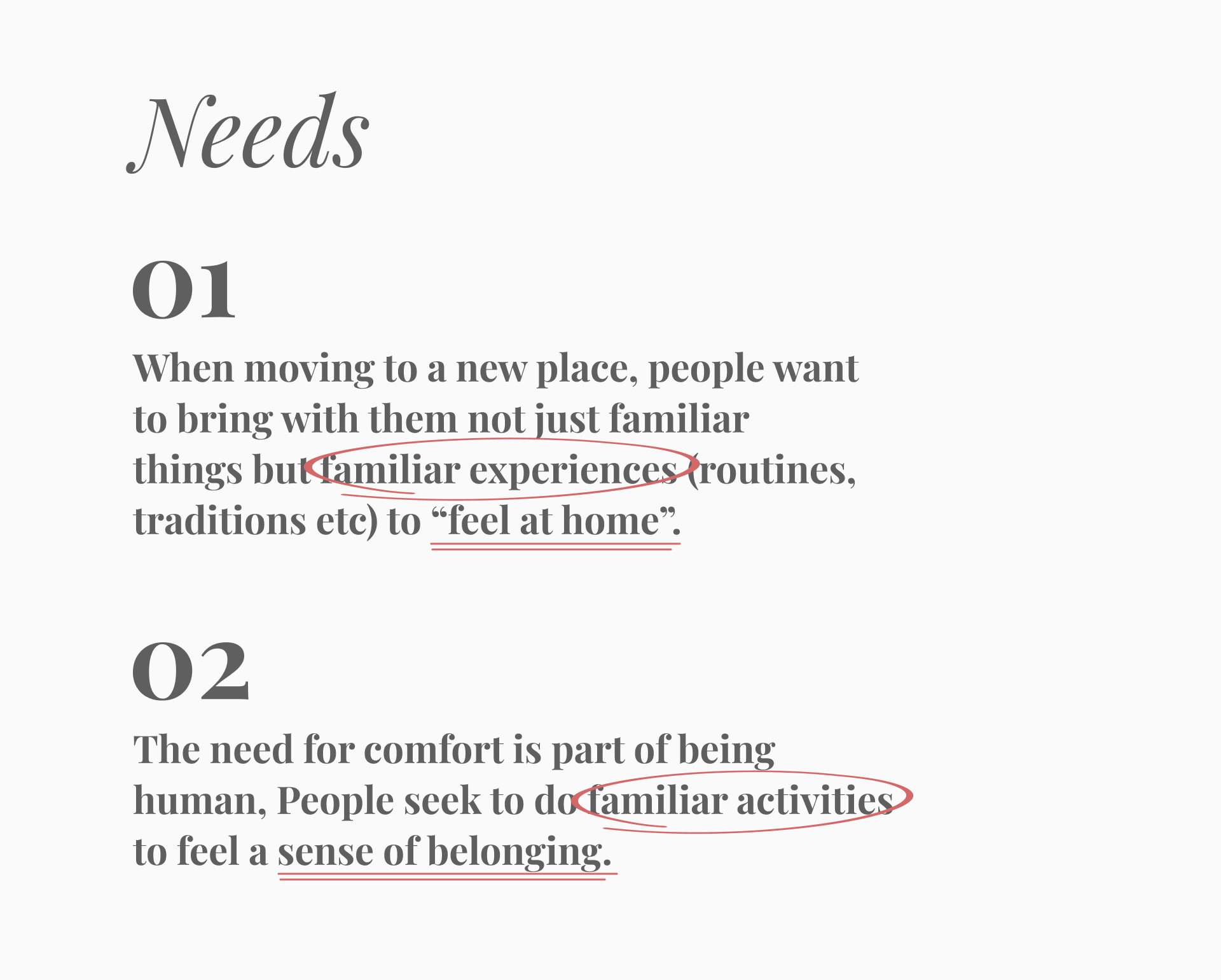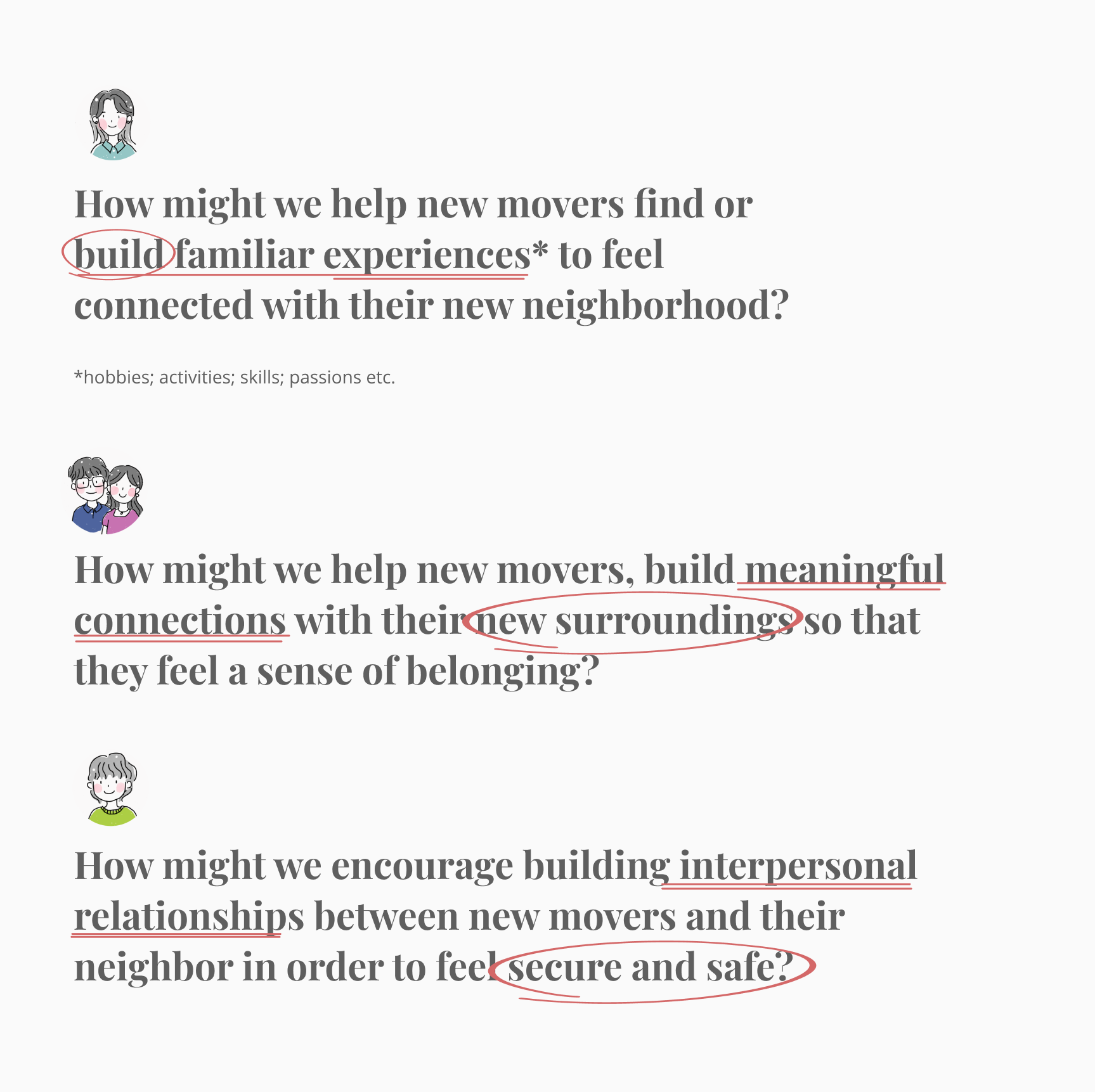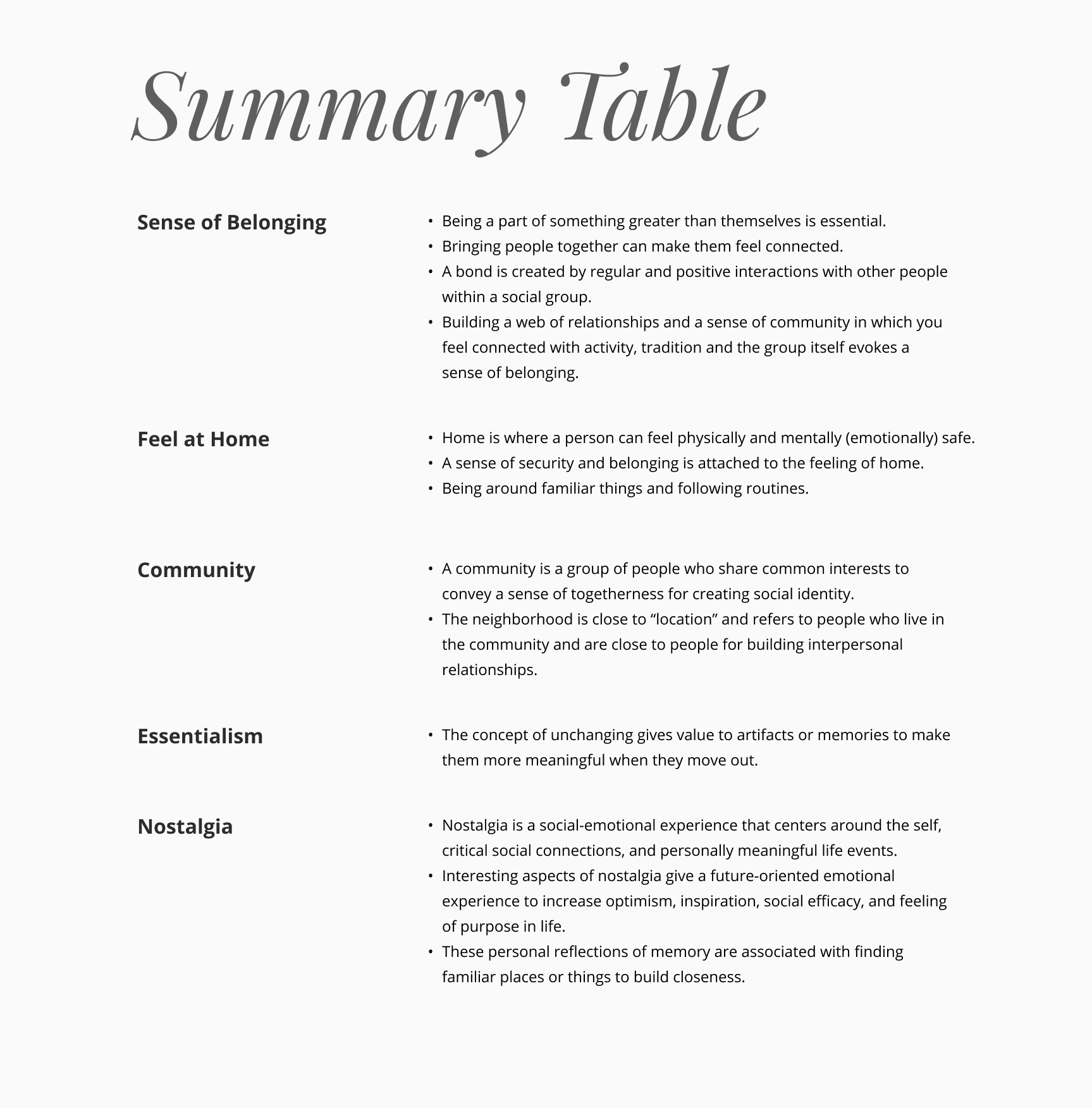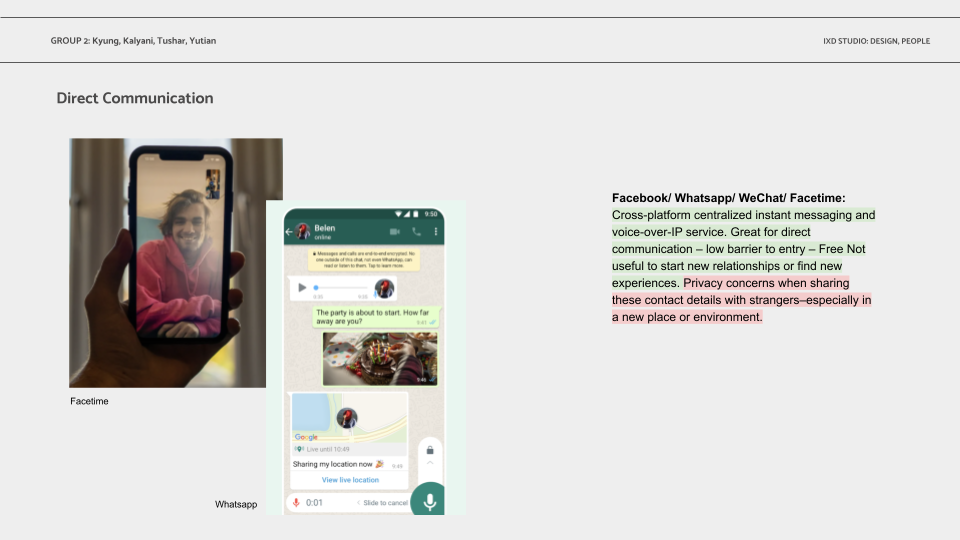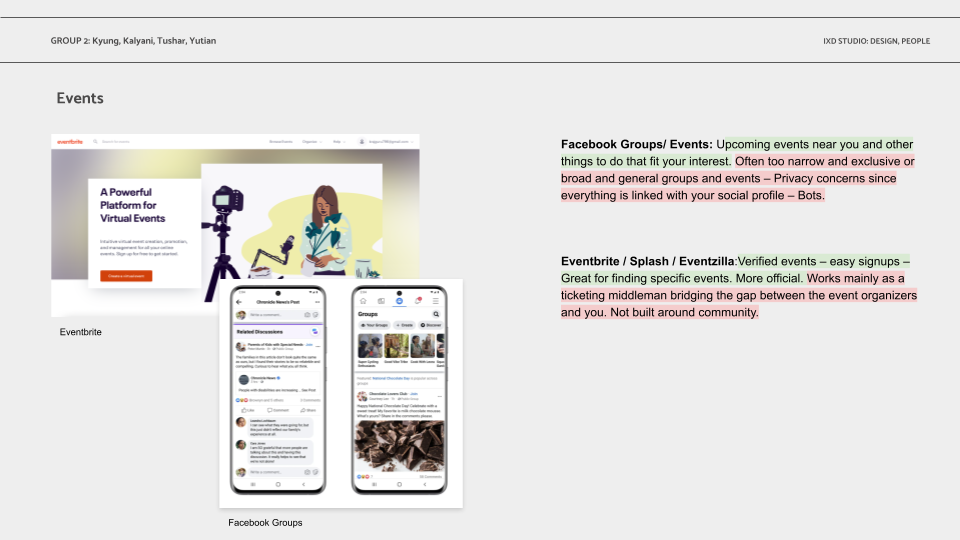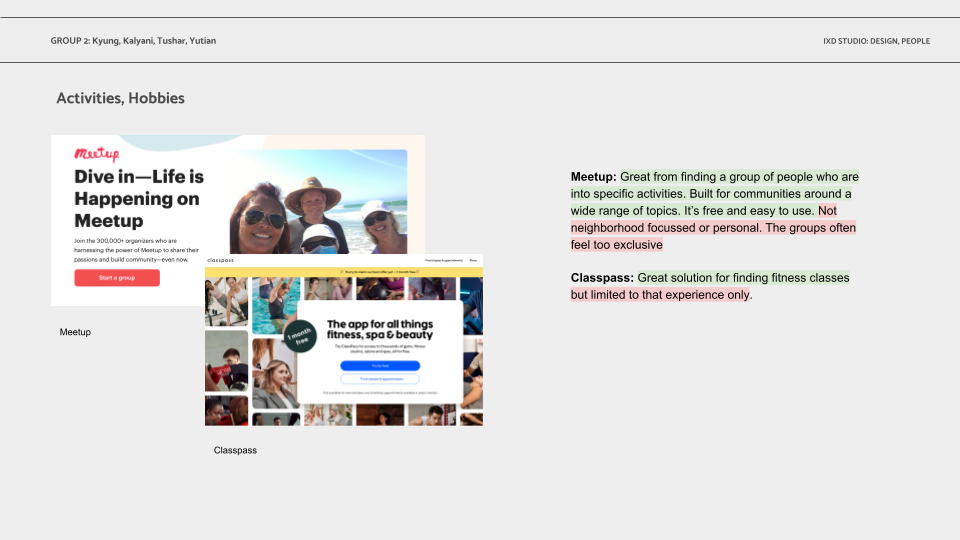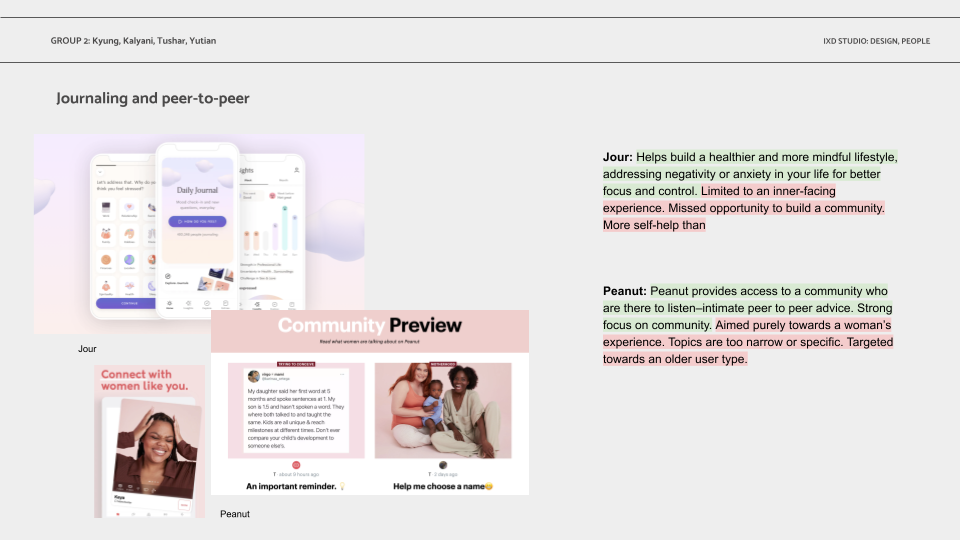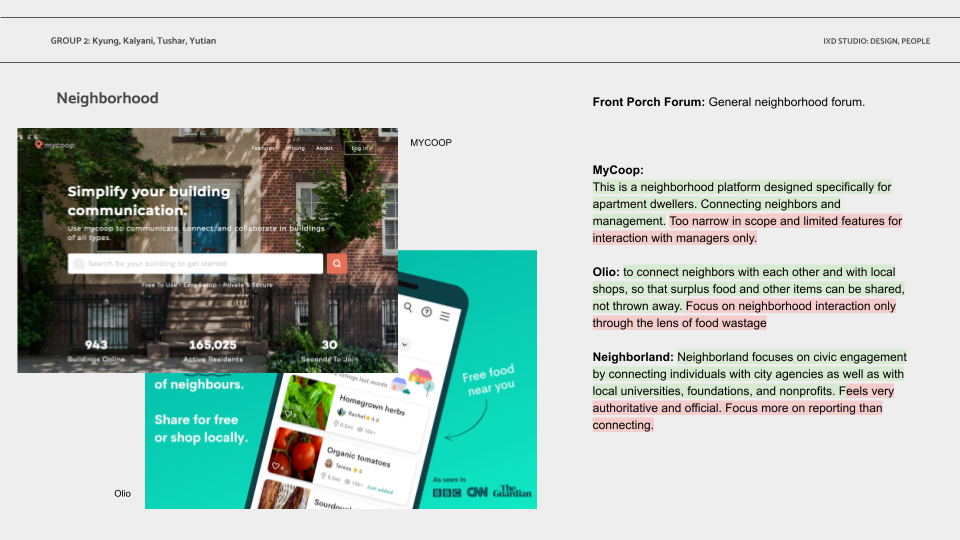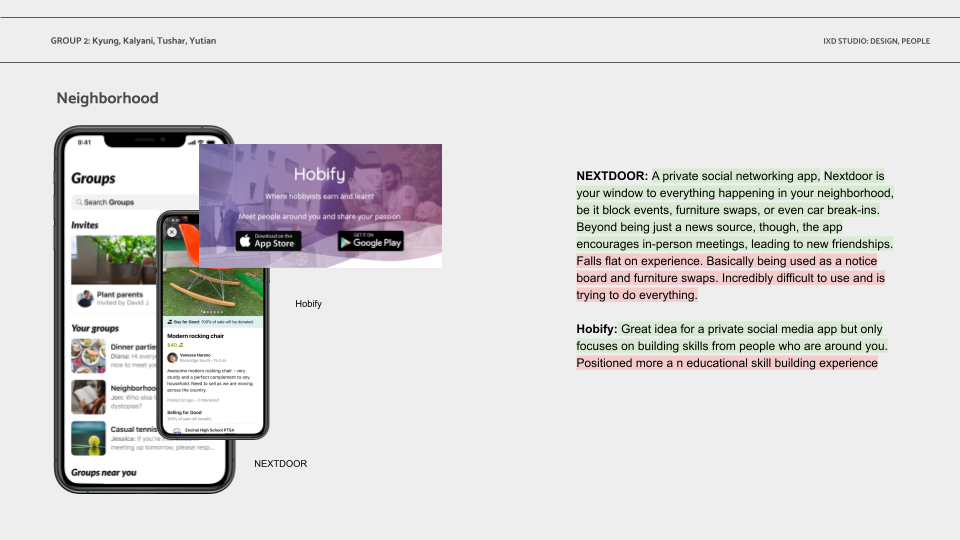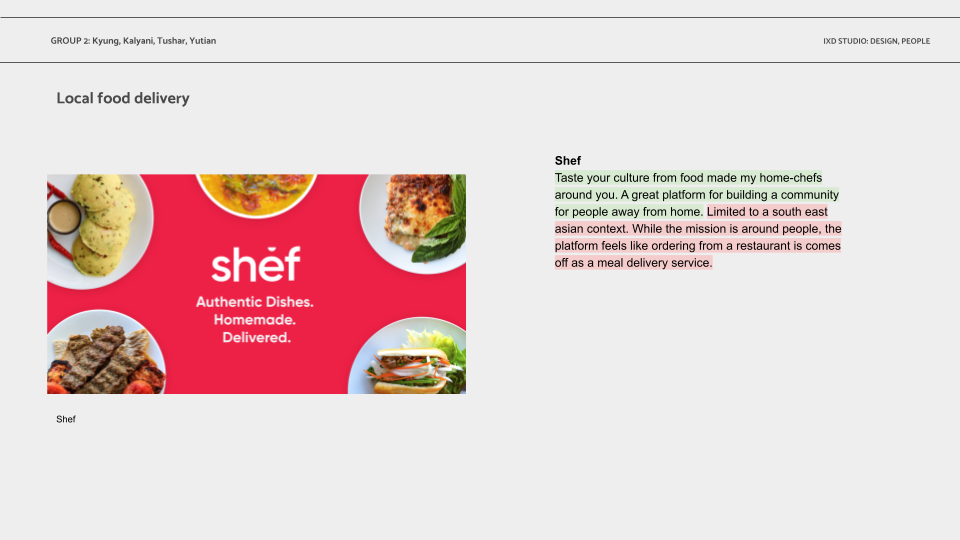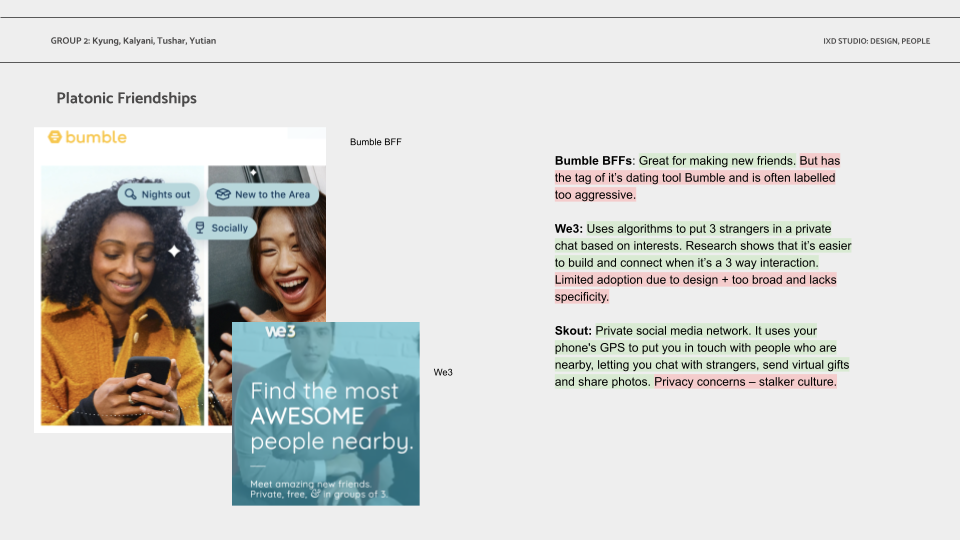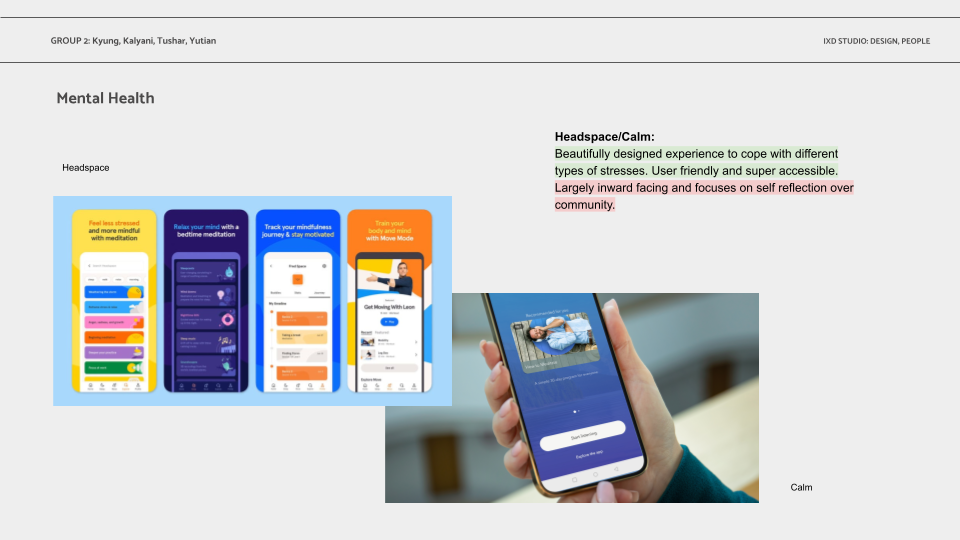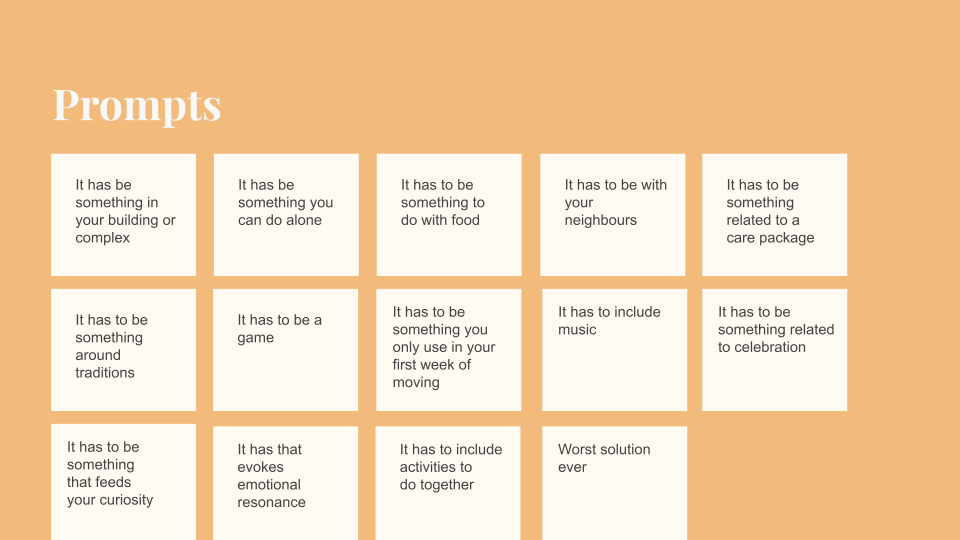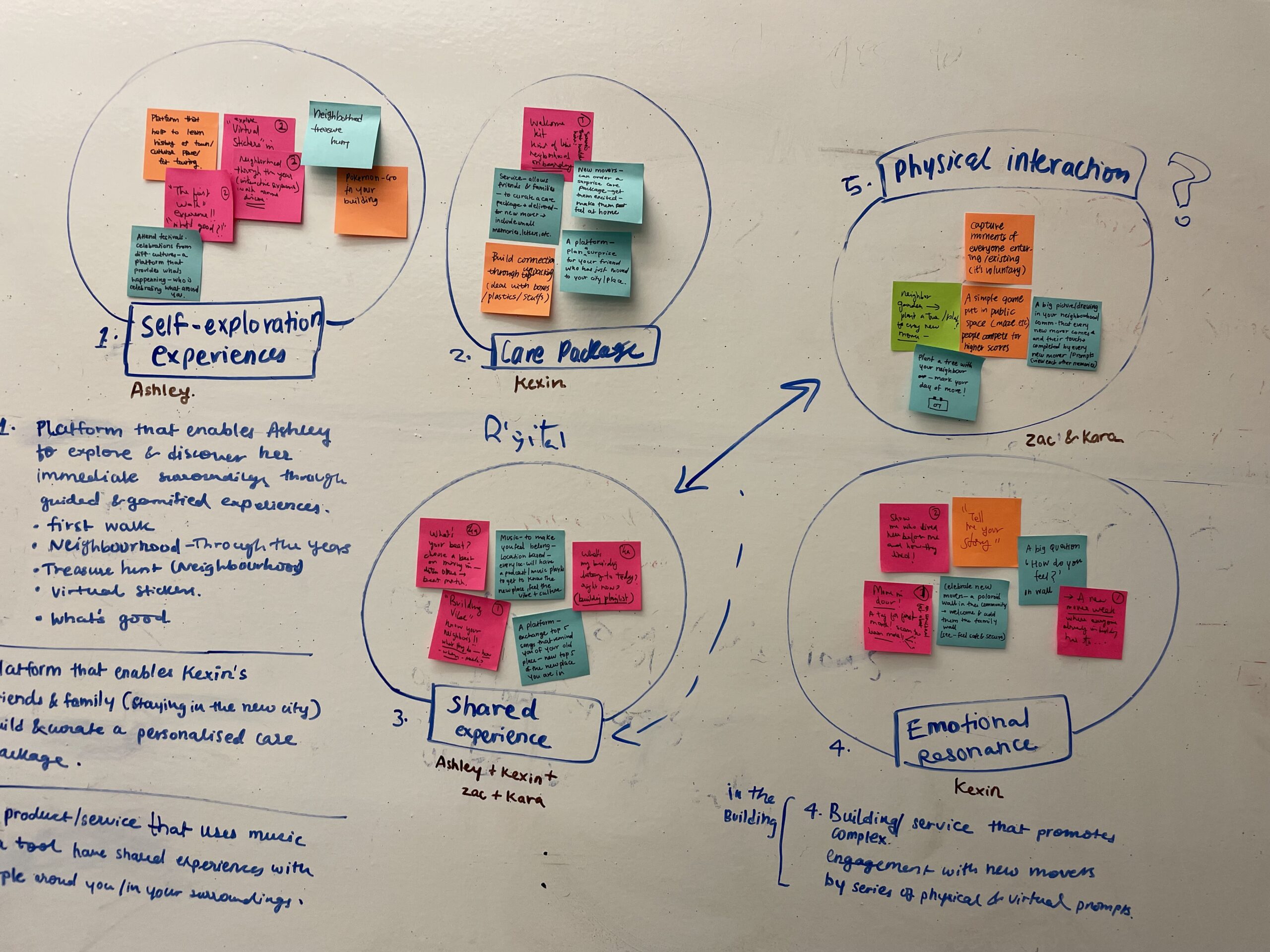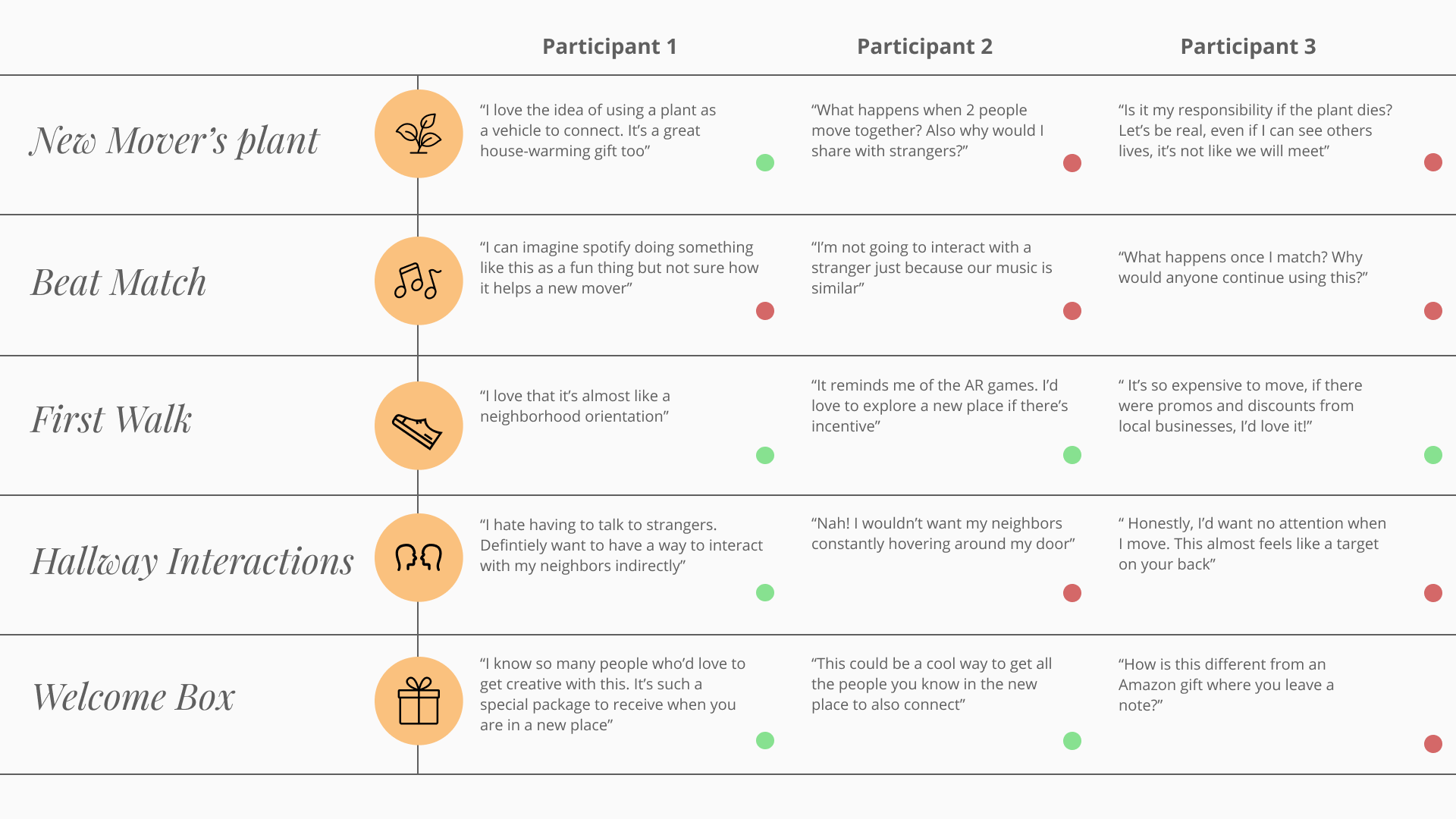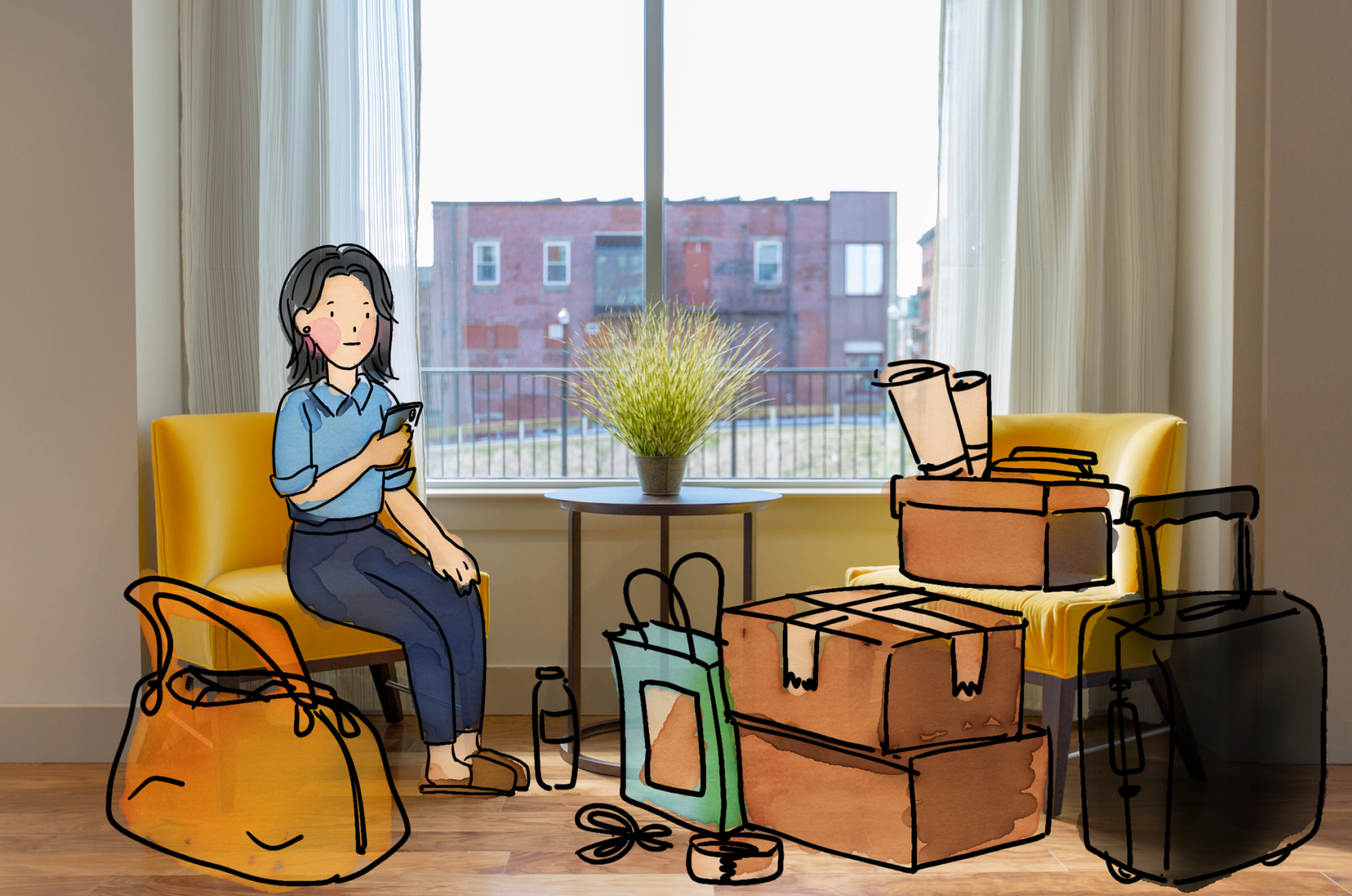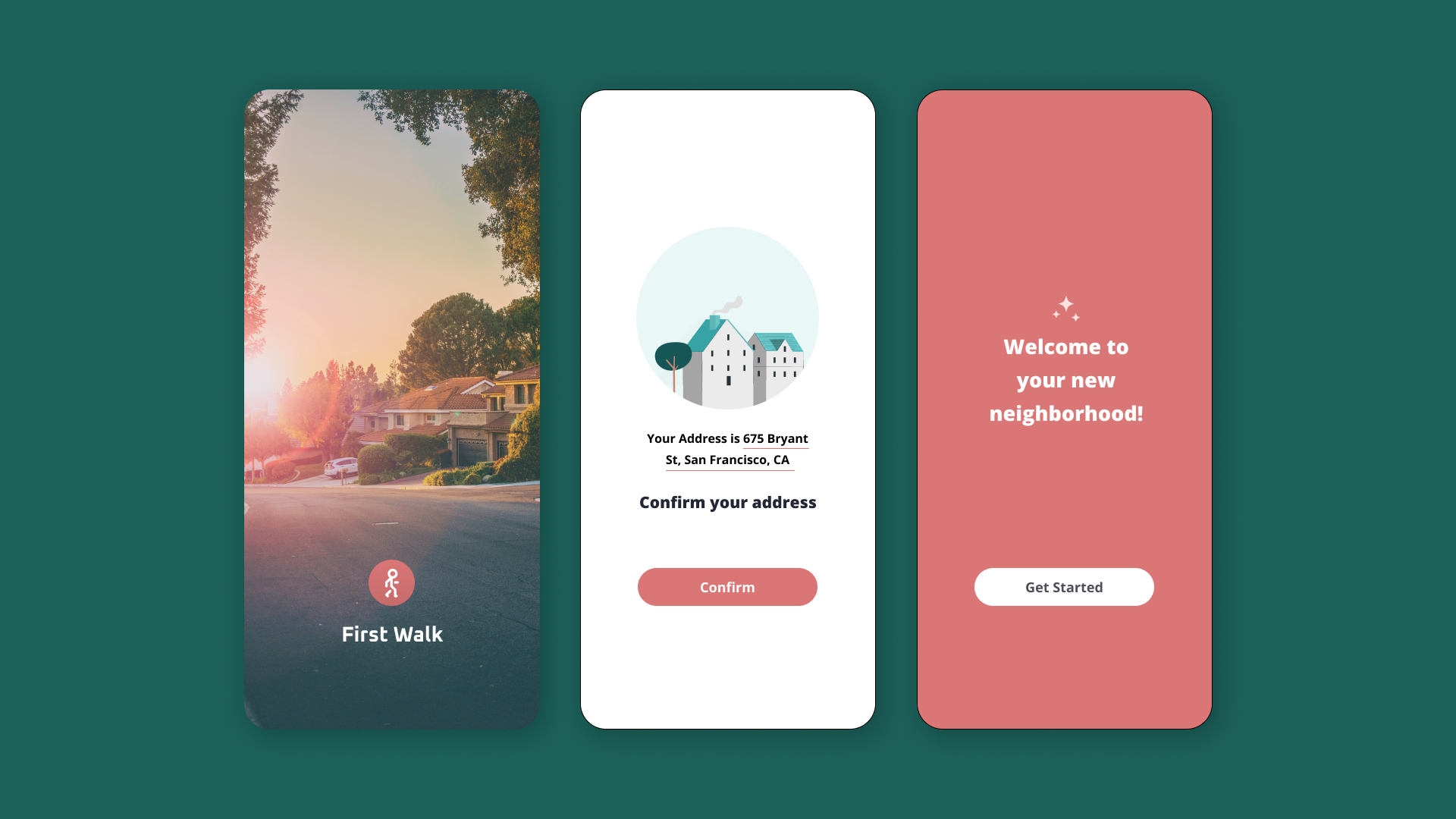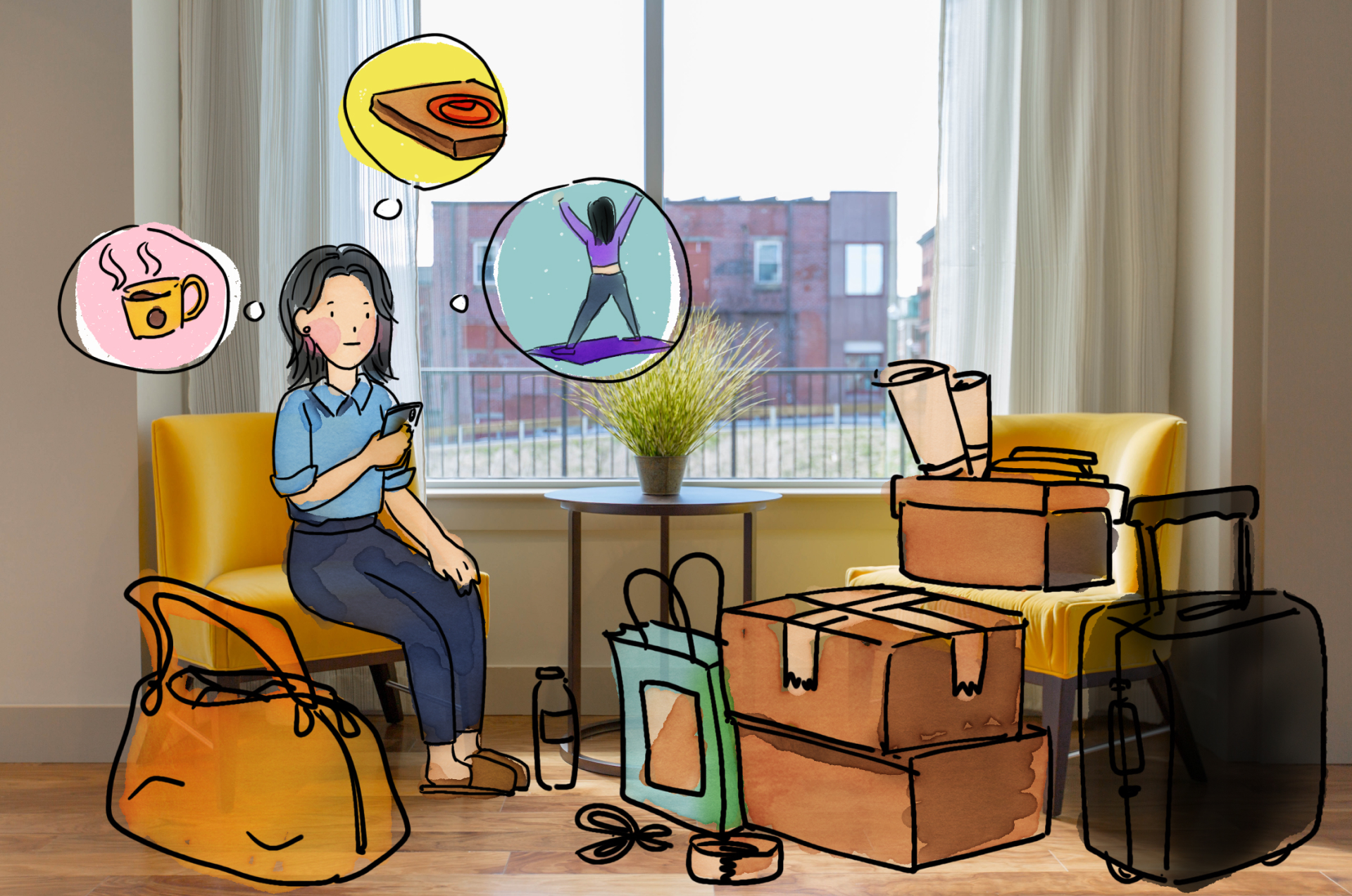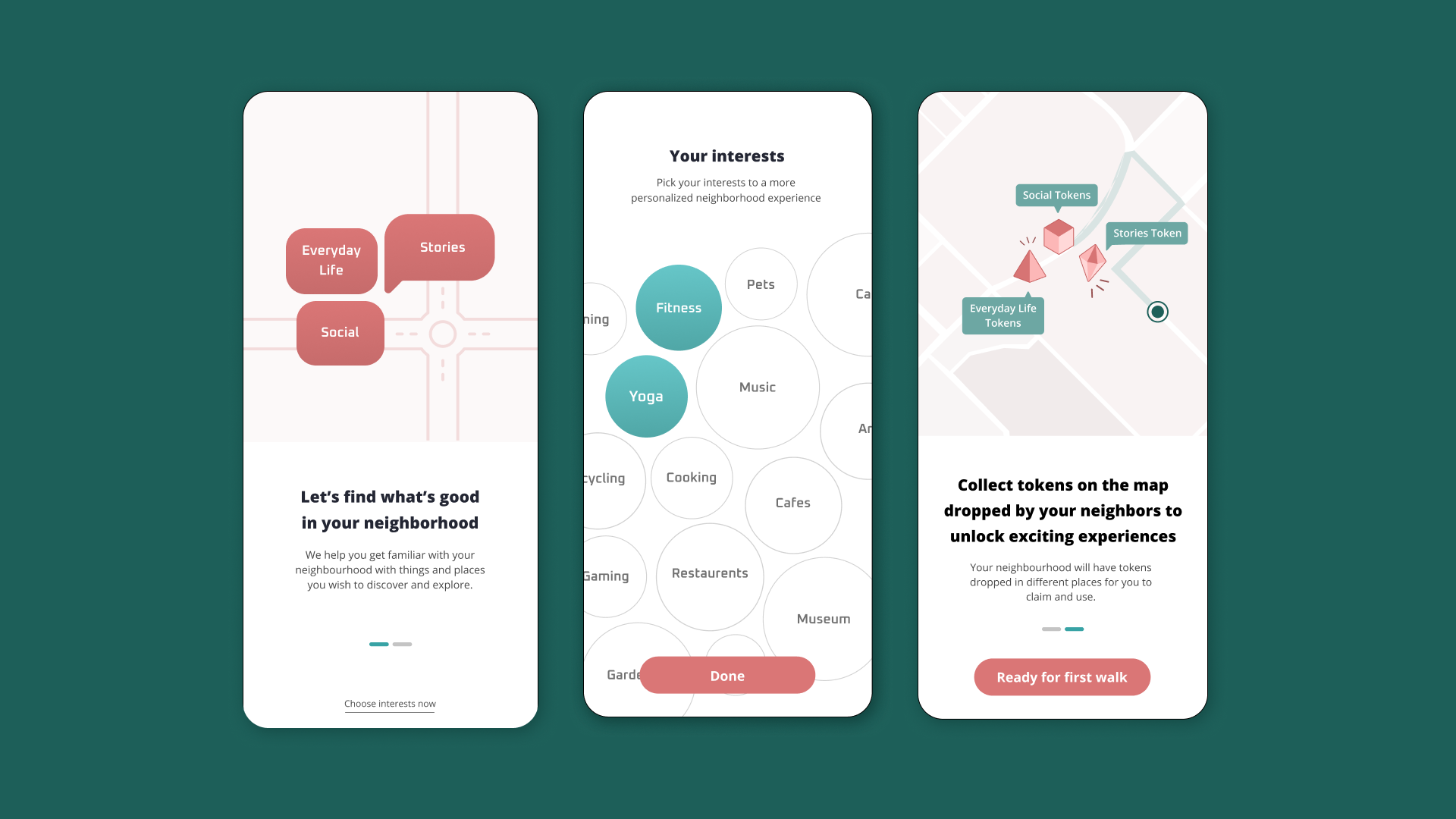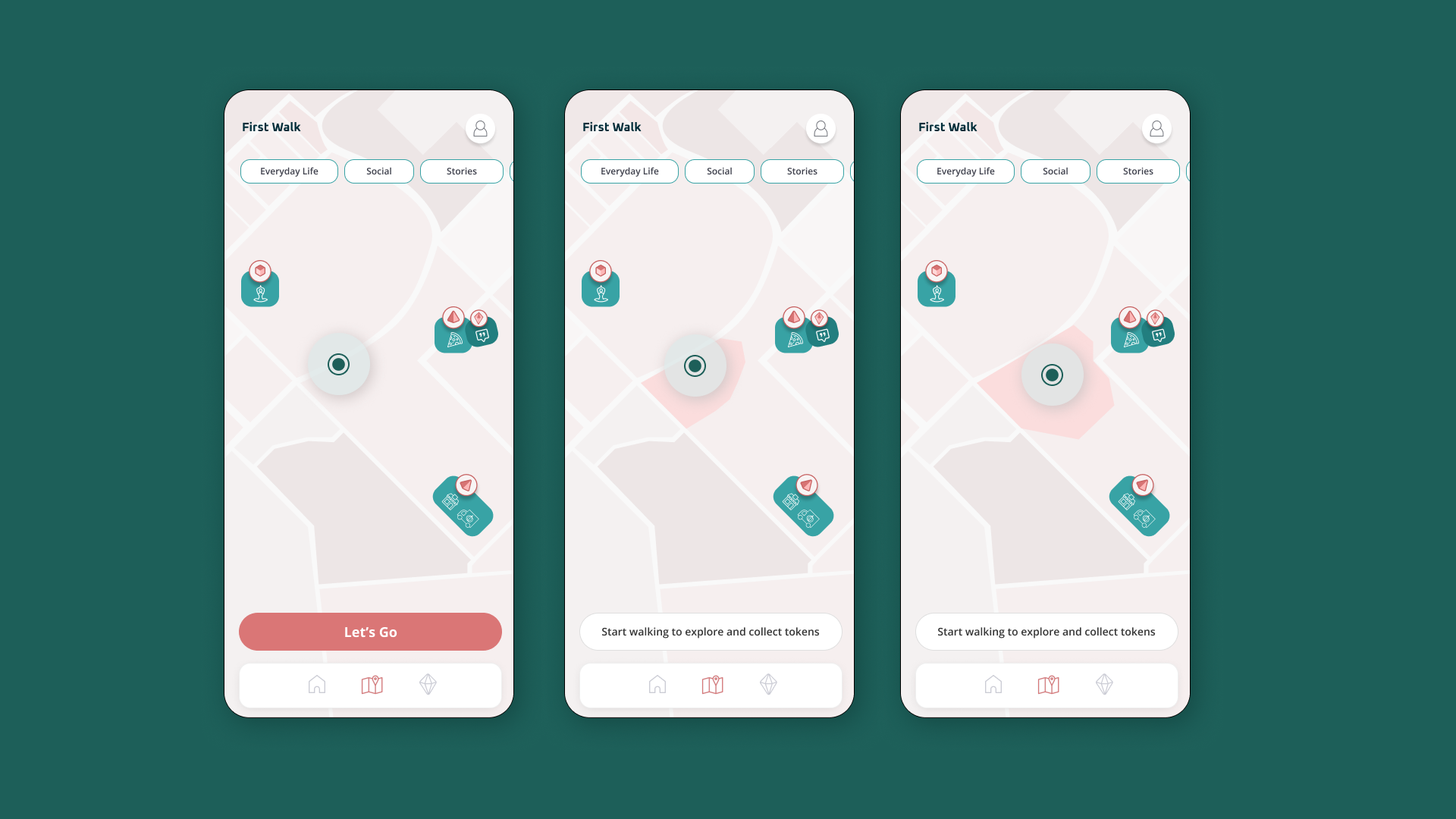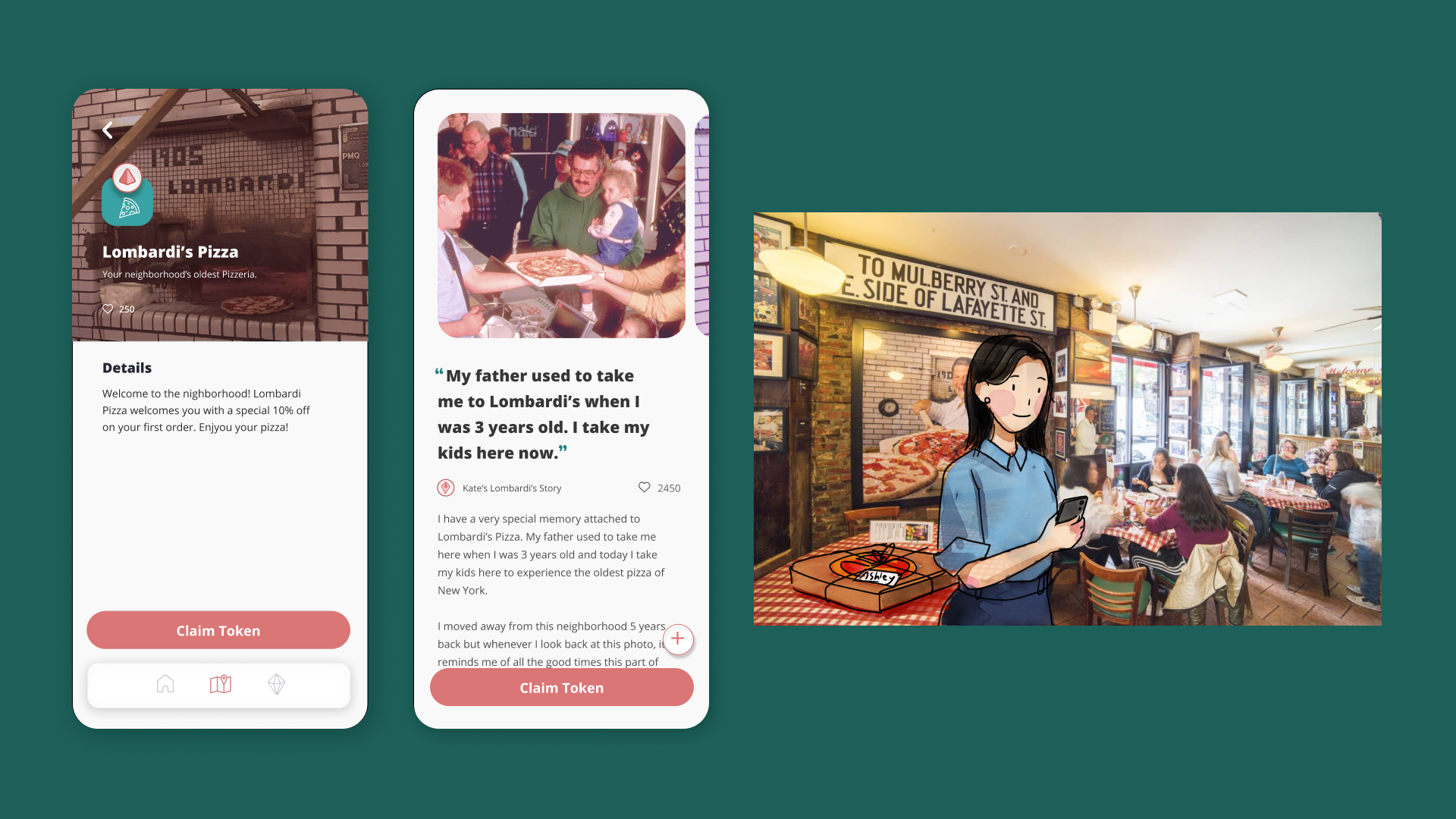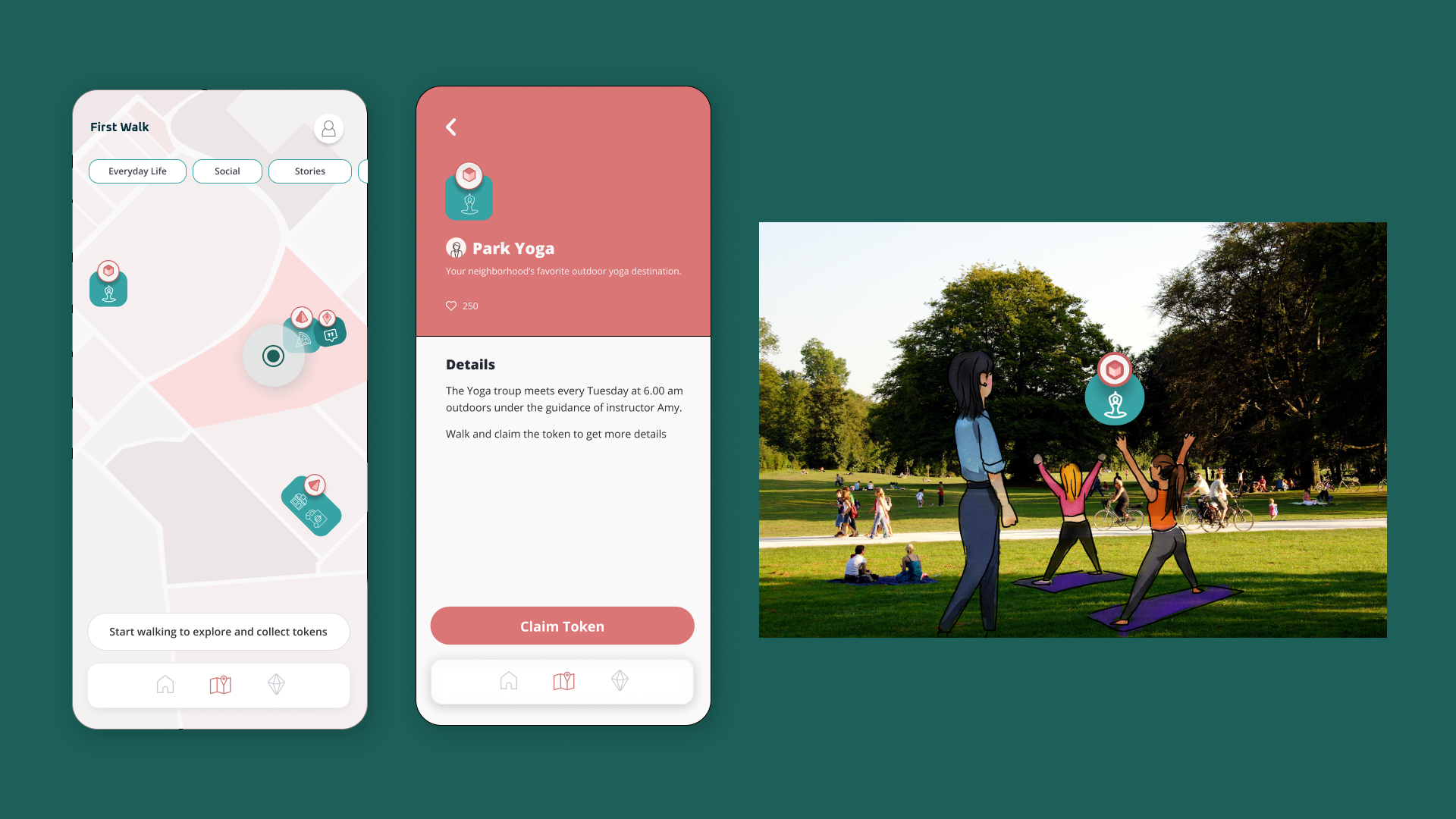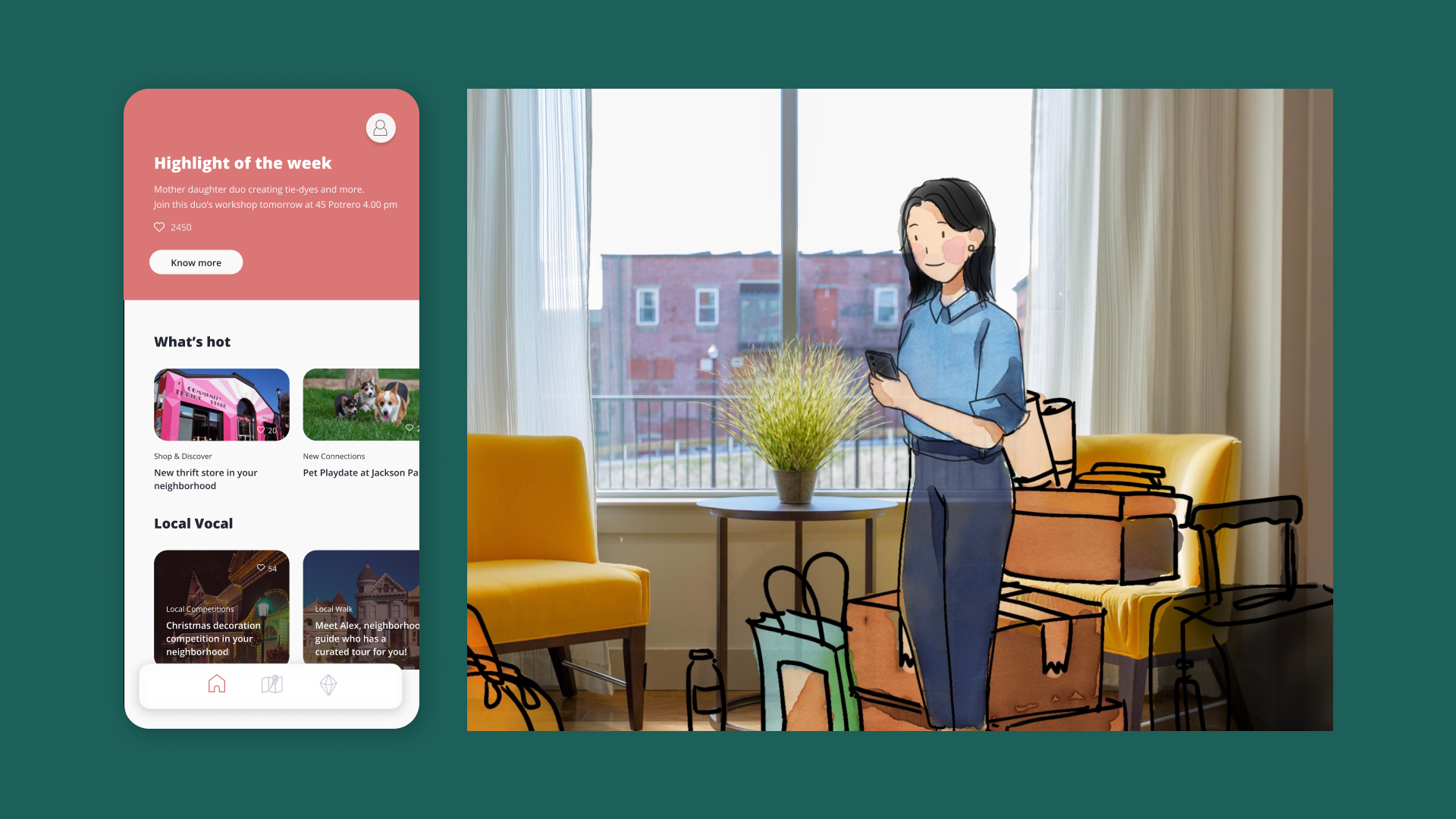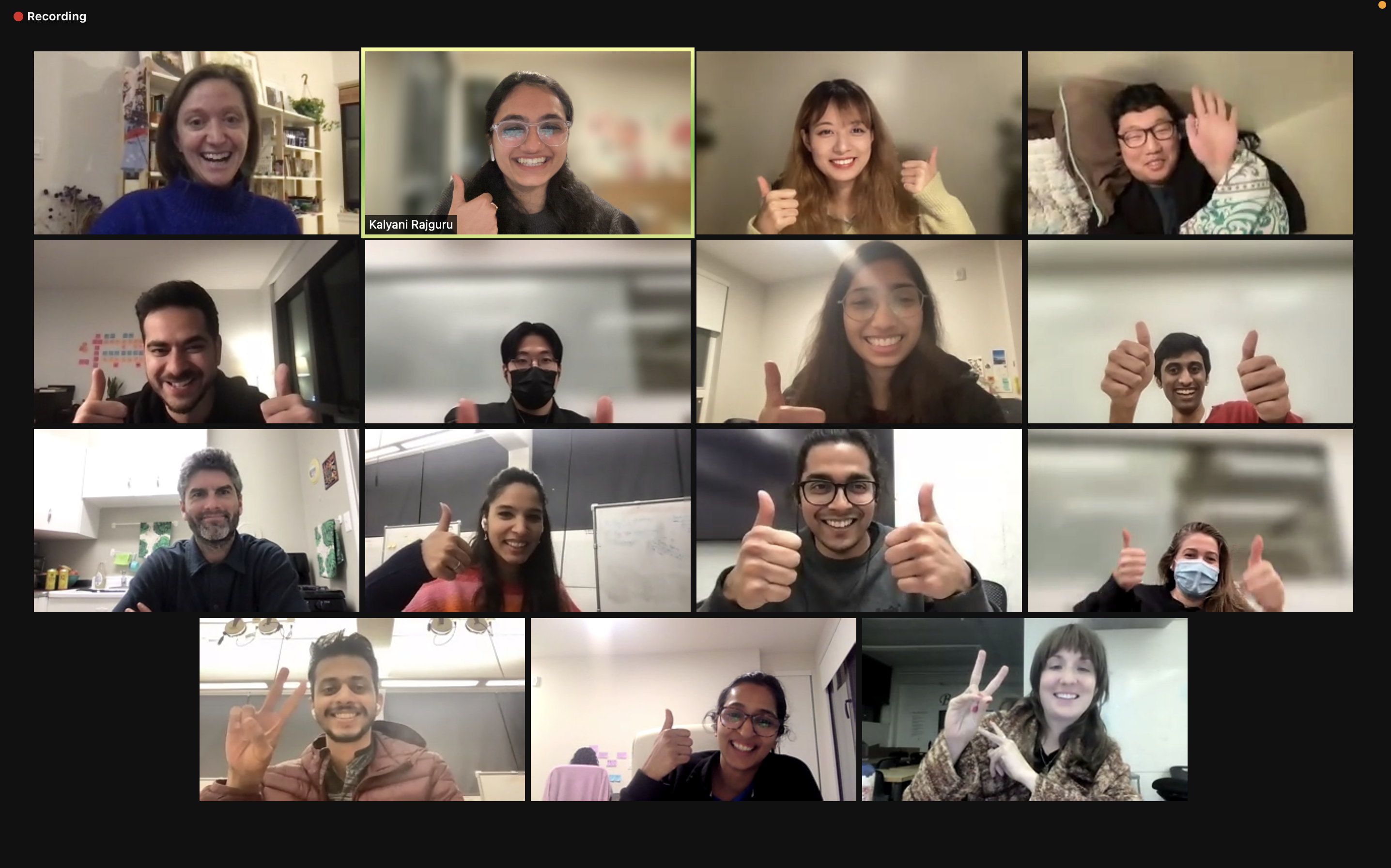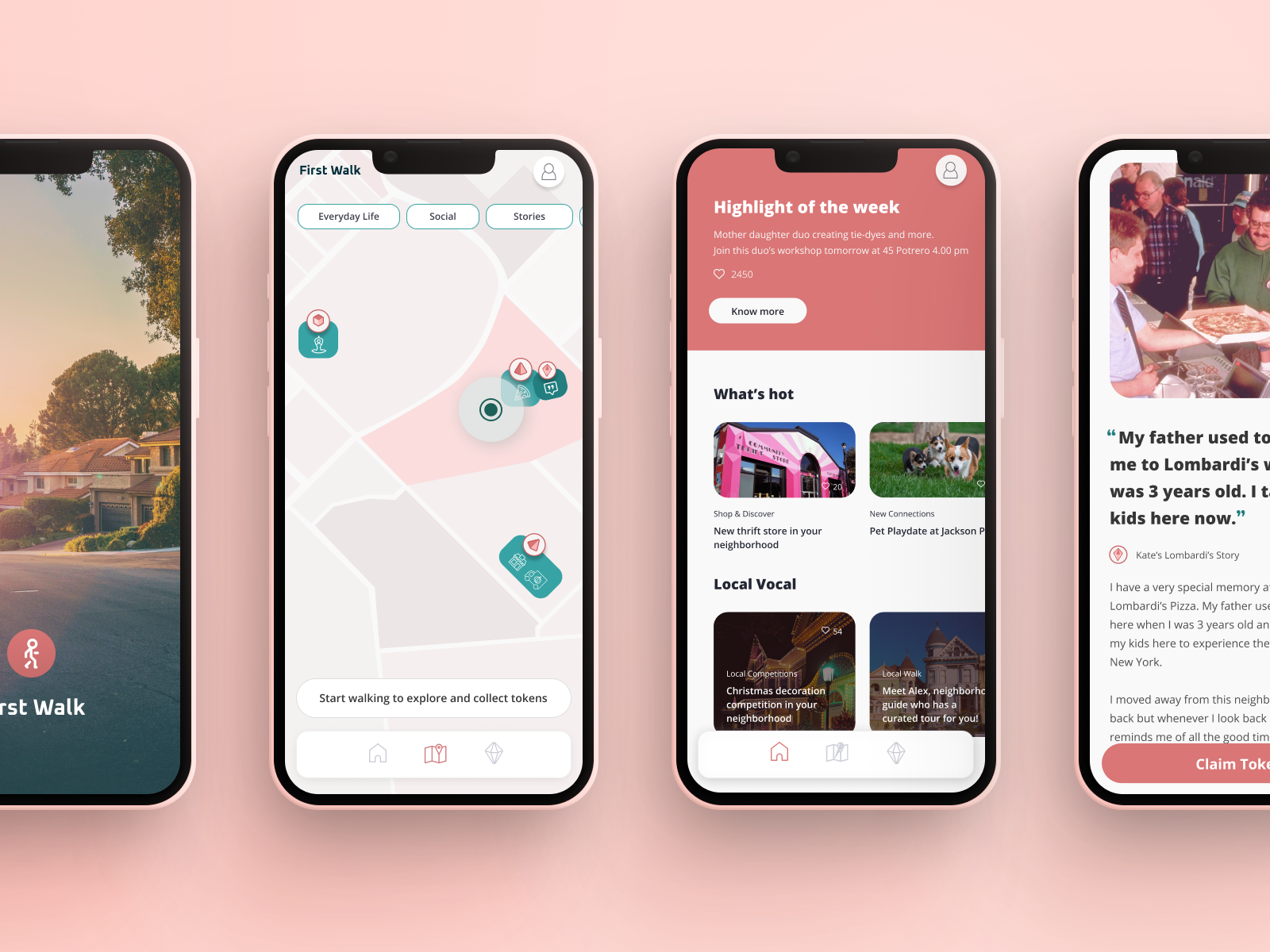
First Walk
LinkedIn Case Study
TEAM
Kalyani Rajguru
Tushar Ghei
Yutian Wu
ADVISOR
Rebecca Blum - UX Researcher at Google
MY CONTRIBUTIONS
Design Research
User Experience Design
DURATION
12 Weeks
TEAM
Anci Sun
MENTORS
Catherine Tran
MY CONTRIBUTIONS
Design Research
User Experience Design
Rapid Prototyping
DURATION
8 Weeks
TEAM
Anci Sun
MENTORS
Catherine Tran
MY CONTRIBUTIONS
Design Research
User Experience Design
Rapid Prototyping
DURATION
8 Weeks
First Walk is a hyperlocal assistant that inspires new movers to explore their immediate surroundings through a guided and immersive narrative.
Our team had a design challenge to improve the moving experience. We explored a typical journey of these experiences to understand aspects of the neighborhood and local communities for building unique storytelling.
LinkedIn is a unique social and professional networking platform that helps individuals look for new opportunities and connect with other professionals.
Our desire to reshape the relationship between LinkedIn Groups and the newsfeed was born out of our interactions using the platform as job seekers during the COVID-19 pandemic. We sought to understand how LinkedIn used its unique position as a professional networking and social service to drive engagement, build community, and ultimately — help job seekers land their next role.
LinkedIn is a unique social and professional networking platform that helps individuals look for new opportunities and connect with other professionals.
Our desire to reshape the relationship between LinkedIn Groups and the newsfeed was born out of our interactions using the platform as job seekers during the COVID-19 pandemic. We sought to understand how LinkedIn used its unique position as a professional networking and social service to drive engagement, build community, and ultimately — help job seekers land their next role.
DESIGN PROMPTS
PROBLEMS
"Your client is a well-funded start-up that is focused on improving the moving experience. They’ve come to you and your team because while they believe the moving process is ripe for a redesign, they don’t know where to start or what to do. They hope you will come up with a recommendation for them. For whatever direction you recommend, they will want to understand what you learned in research that supports this idea."
After these interviews, we discovered patterns in how candidates, job seekers, and employers described their experiences with LinkedIn. Based on these insights, we generated HMW (How Might We) questions that we then grouped under the following categories:
- Engagement
- Connection
- Customization
- Information
- Job Search
- Motivation
- Organization
After these interviews, we discovered patterns in how candidates, job seekers, and employers described their experiences with LinkedIn. Based on these insights, we generated HMW (How Might We) questions that we then grouped under the following categories:
- Engagement
- Connection
- Customization
- Information
- Job Search
- Motivation
- Organization
Discover
Research
UNDERSTANDING THE MOVING PROCESS
INTERVIEWS
First, we interviewed friends and family to understand the broad experience and nuances of the moving process in different contexts. We created insights around pain points, thoughts, feelings, themes, hacks, and workarounds for the moving process.
- Moving alone to a new city for work
- Moving with special needs
- Helping another person move
- Driving across the country to move for work
- Moving to a new country for school
- Someone moving locally
After these interviews, we discovered patterns in how candidates, job seekers, and employers described their experiences with LinkedIn. Based on these insights, we generated HMW (How Might We) questions that we then grouped under the following categories:
- Engagement
- Connection
- Customization
- Information
- Job Search
- Motivation
- Organization
After these interviews, we discovered patterns in how candidates, job seekers, and employers described their experiences with LinkedIn. Based on these insights, we generated HMW (How Might We) questions that we then grouped under the following categories:
- Engagement
- Connection
- Customization
- Information
- Job Search
- Motivation
- Organization
EXPLORING UNCERTAINTY DURING THE MOVING PROCESS
The card sorting activity with 22+ people helped to understand how the user thinks about the context where we asked, “What were you most uncertain about while moving? The top 5 responses were:
- Moving alone
- Neighborhood Safety
- Culture
- Paperwork
- Packing
After these interviews, we discovered patterns in how candidates, job seekers, and employers described their experiences with LinkedIn. Based on these insights, we generated HMW (How Might We) questions that we then grouped under the following categories:
- Engagement
- Connection
- Customization
- Information
- Job Search
- Motivation
- Organization
After these interviews, we discovered patterns in how candidates, job seekers, and employers described their experiences with LinkedIn. Based on these insights, we generated HMW (How Might We) questions that we then grouped under the following categories:
- Engagement
- Connection
- Customization
- Information
- Job Search
- Motivation
- Organization
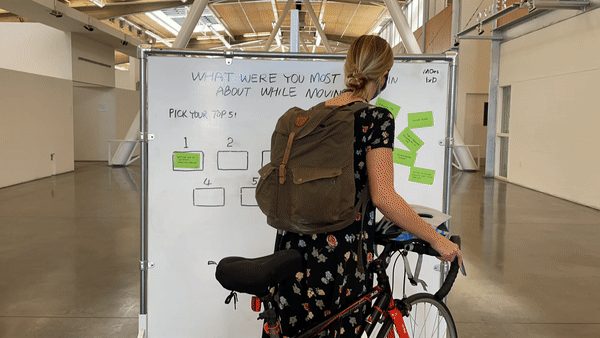
We found surprises and main themes based on various responses' thoughts and concerns. One of the unique discoveries was that memories uncover nostalgic experiences while moving.
After these interviews, we discovered patterns in how candidates, job seekers, and employers described their experiences with LinkedIn. Based on these insights, we generated HMW (How Might We) questions that we then grouped under the following categories:
- Engagement
- Connection
- Customization
- Information
- Job Search
- Motivation
- Organization
After these interviews, we discovered patterns in how candidates, job seekers, and employers described their experiences with LinkedIn. Based on these insights, we generated HMW (How Might We) questions that we then grouped under the following categories:
- Engagement
- Connection
- Customization
- Information
- Job Search
- Motivation
- Organization
"You even find some old memories. Photos, souvenirs, and random things you had collected over the years. It feels comforting."
After these interviews, we discovered patterns in how candidates, job seekers, and employers described their experiences with LinkedIn. Based on these insights, we generated HMW (How Might We) questions that we then grouped under the following categories:
- Engagement
- Connection
- Customization
- Information
- Job Search
- Motivation
- Organization
After these interviews, we discovered patterns in how candidates, job seekers, and employers described their experiences with LinkedIn. Based on these insights, we generated HMW (How Might We) questions that we then grouped under the following categories:
- Engagement
- Connection
- Customization
- Information
- Job Search
- Motivation
- Organization
Define
Research
HYPOTHESIS AND REFRAMING
Nostalgia significantly impacts emotional safety when people uncover memories that create meaningful connections. It gives comfort to seek old memories during times of uncertainty. We conducted a second round of interviews to dig deep into our hypothesis.
- When moving to a new place, people want to bring with them not just familiar things but familiar experiences (routines, traditions, etc.) to “feel at home.”
- People crave closeness and connection, which they get through comfort objects, especially during times of uncertainty.
- People place greater value on things once they have ownership of items with symbolic or sentimental value.
- People look for similar things in their new homes to feel comfortable by tending to the arrangement of past interiors.
After these interviews, we discovered patterns in how candidates, job seekers, and employers described their experiences with LinkedIn. Based on these insights, we generated HMW (How Might We) questions that we then grouped under the following categories:
- Engagement
- Connection
- Customization
- Information
- Job Search
- Motivation
- Organization
After these interviews, we discovered patterns in how candidates, job seekers, and employers described their experiences with LinkedIn. Based on these insights, we generated HMW (How Might We) questions that we then grouped under the following categories:
- Engagement
- Connection
- Customization
- Information
- Job Search
- Motivation
- Organization
EXPLORING NOSTALGIA DURING THE MOVING PROCESS
INSIGHTS
Collecting personal stories and artifacts helped us to understand people's relationship to things, routines, rituals, and behavior around nostalgia while moving out to a new place. "Sense of belonging" and "feeling at home" were the main factors influencing decision makings by emotional behavior in an unfamiliar experience. As a result, we identify problem areas to narrow it down to those who have moved out for a big life change, such as a dream job, marriage, or study.
After these interviews, we discovered patterns in how candidates, job seekers, and employers described their experiences with LinkedIn. Based on these insights, we generated HMW (How Might We) questions that we then grouped under the following categories:
- Engagement
- Connection
- Customization
- Information
- Job Search
- Motivation
- Organization
After these interviews, we discovered patterns in how candidates, job seekers, and employers described their experiences with LinkedIn. Based on these insights, we generated HMW (How Might We) questions that we then grouped under the following categories:
- Engagement
- Connection
- Customization
- Information
- Job Search
- Motivation
- Organization
Illustration created by Yutian Wu
Based on our research, we created a hypothetical user model (Shannon), who is a data scientist at Startup. Shannon has been thinking of leaving her current job and has started passively looking for other data science roles. She’s always been a passive user but has started data science groups to start reaching out to other data science professionals. She hopes that joining these groups and engaging with other users will help her find her next opportunity.
Based on our research, we created a hypothetical user model (Shannon), who is a data scientist at Startup. Shannon has been thinking of leaving her current job and has started passively looking for other data science roles. She’s always been a passive user but has started data science groups to start reaching out to other data science professionals. She hopes that joining these groups and engaging with other users will help her find her next opportunity.
BUILDING USER PERSONAS AND HMWS
FRAMING
Based on our interviews and stories of nostalgia, we created user personas to build representations of the key audiences. The three types of users aimed to capture unique characteristics and synthesize them to connect specific quotes for communicating interesting themes and patterns.
After these interviews, we discovered patterns in how candidates, job seekers, and employers described their experiences with LinkedIn. Based on these insights, we generated HMW (How Might We) questions that we then grouped under the following categories:
- Engagement
- Connection
- Customization
- Information
- Job Search
- Motivation
- Organization
After these interviews, we discovered patterns in how candidates, job seekers, and employers described their experiences with LinkedIn. Based on these insights, we generated HMW (How Might We) questions that we then grouped under the following categories:
- Engagement
- Connection
- Customization
- Information
- Job Search
- Motivation
- Organization
SECONDARY RESEARCH
HYPOTHETICAL USER MODEL
We conducted secondary research on various topics such as How/Why people feel safe, emotional safety, essentialism, a sense of belonging, and competitive analysis. Then, we summarized the secondary research findings in one table and highlighted the pros and cons of the competitive landscape. The analogy research also helped to look at different perspectives where the others feel the unfamiliar or uncomfortable situation to create connections.
Based on our research, we created a hypothetical user model (Shannon), who is a data scientist at Startup. Shannon has been thinking of leaving her current job and has started passively looking for other data science roles. She’s always been a passive user but has started data science groups to start reaching out to other data science professionals. She hopes that joining these groups and engaging with other users will help her find her next opportunity.
Based on our research, we created a hypothetical user model (Shannon), who is a data scientist at Startup. Shannon has been thinking of leaving her current job and has started passively looking for other data science roles. She’s always been a passive user but has started data science groups to start reaching out to other data science professionals. She hopes that joining these groups and engaging with other users will help her find her next opportunity.
Develop
Ideation
POTENTIAL OPPORTUNITIES
DESIGN EXPLORATIONS
By using a whole range of prompts, we brainstormed potential opportunities to generate 50+ ideas. We then narrowed it down into more prominent themes to create affinity mapping for addressing the proper needs of the target audience. Synthesizing previous research insights illustrate five key concepts with storyboards and written contexts to ensure the design process.
We gathered the insights from our researches to conceptualize the following initial ideas.
- Expanding the groups container on the newsfeed.
- Adding filters to the recommendations tab.
- Allowing users to tag groups when creating posts.
- Promoting groups of interest on the newsfeed.
- Showing top interactive users in groups.
- Adding more filters to the followers section.
We gathered the insights from our researches to conceptualize the following initial ideas.
- Expanding the groups container on the newsfeed.
- Adding filters to the recommendations tab.
- Allowing users to tag groups when creating posts.
- Promoting groups of interest on the newsfeed.
- Showing top interactive users in groups.
- Adding more filters to the followers section.
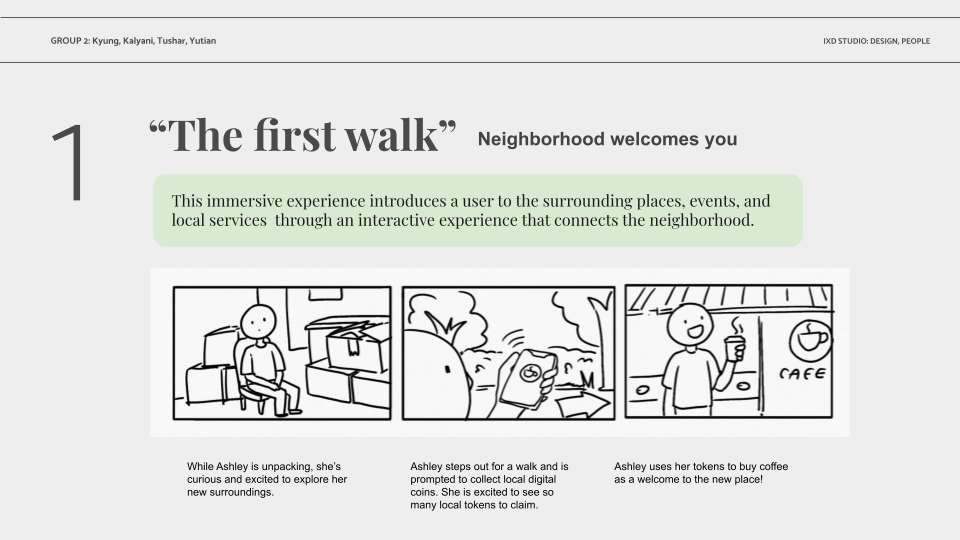

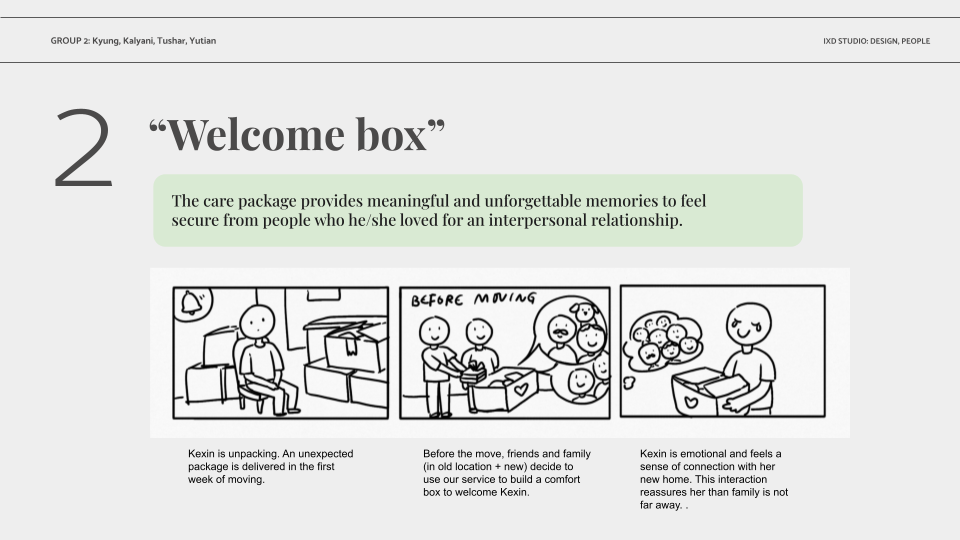
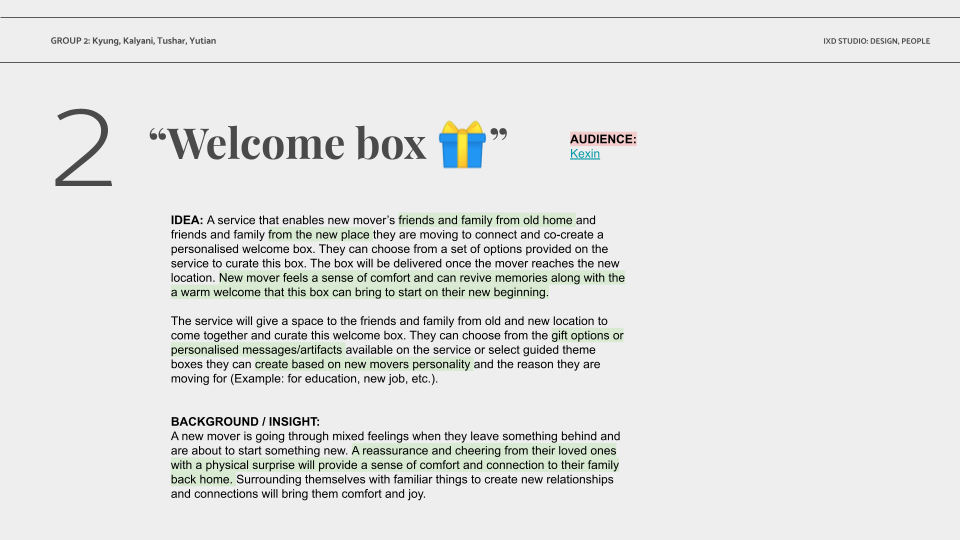
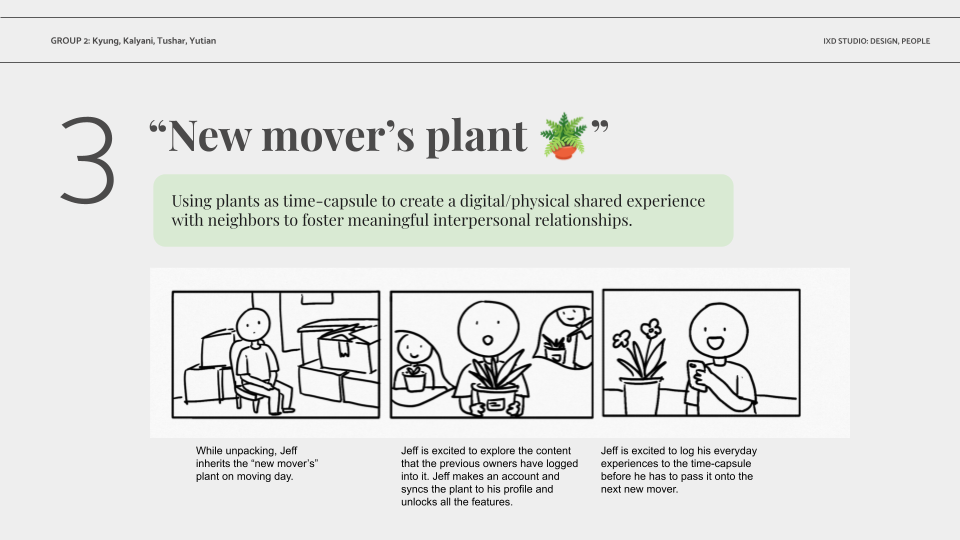
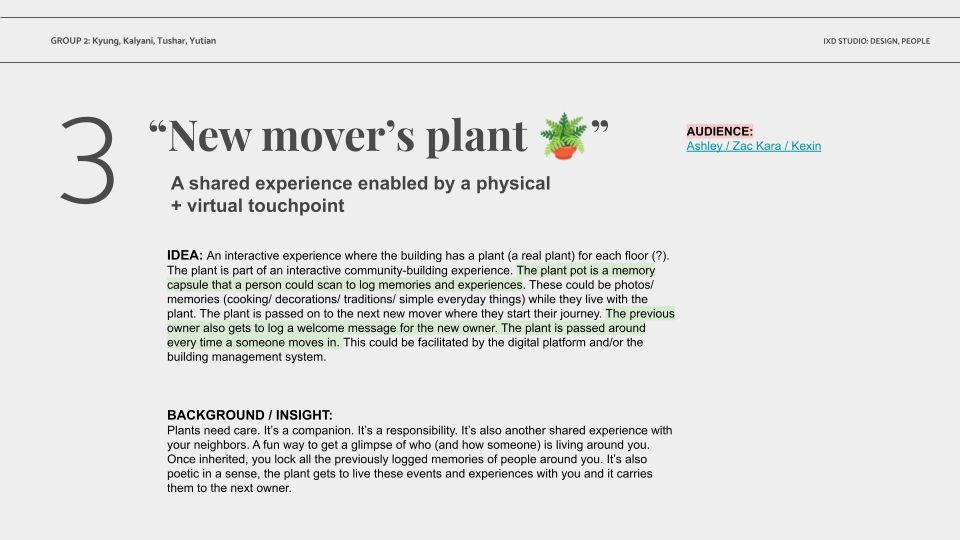
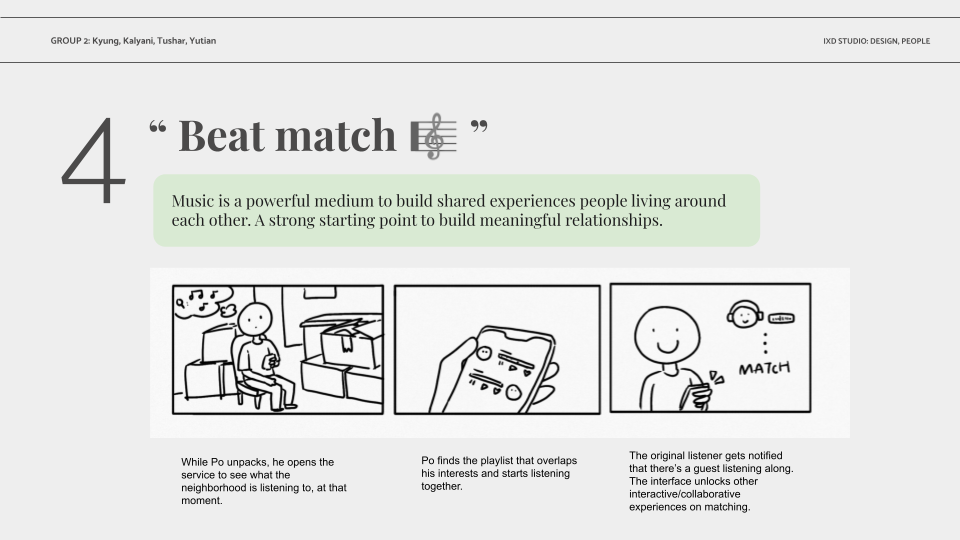
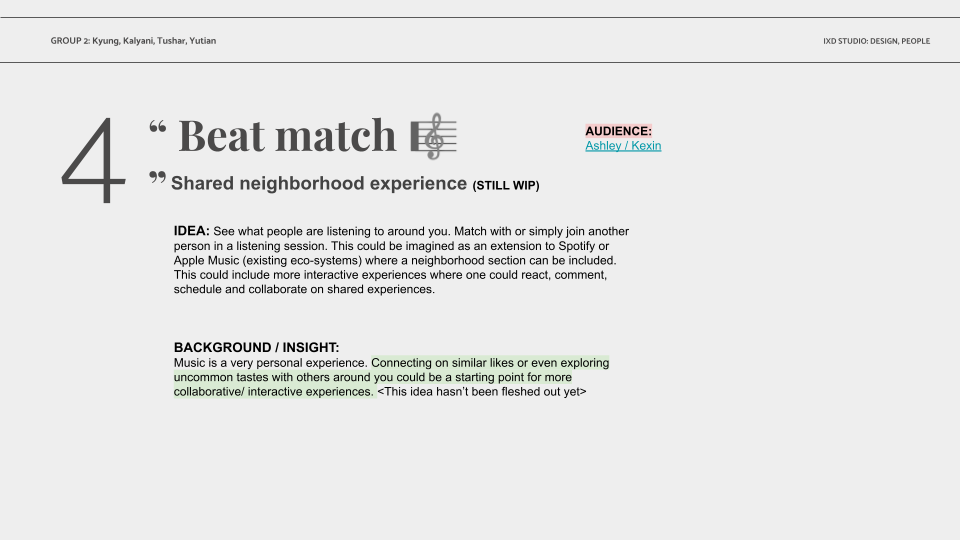
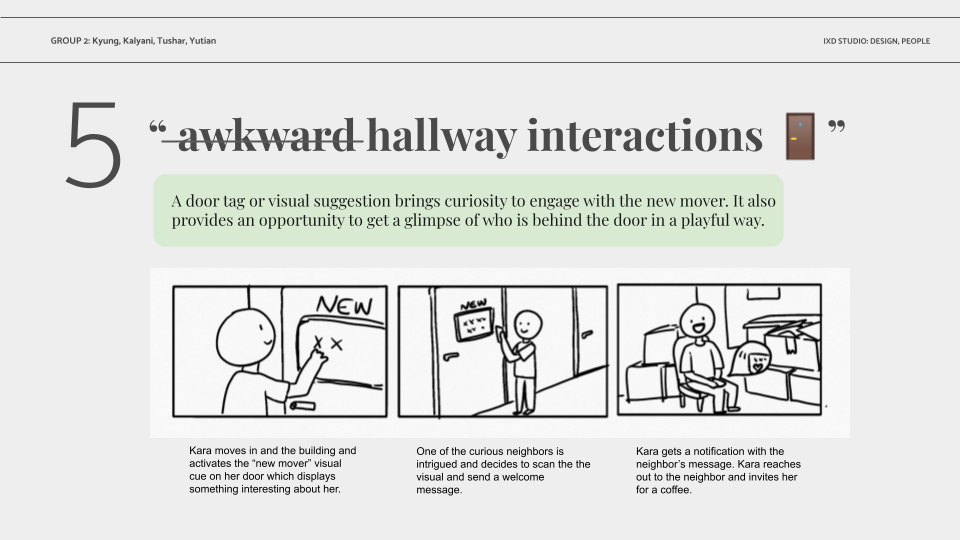
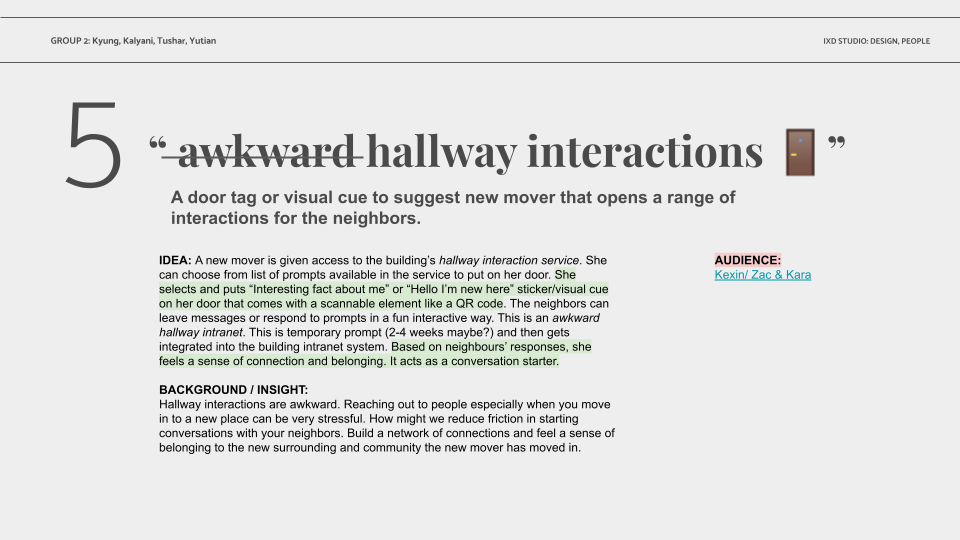
INTITIAL SNAP TESTING
DESIGN EXPLORATIONS
The initial snap testing with three people shared their concerns and thoughts on five key concepts. We explained how each concept would work and asked if they would ever use such a thing in a scenario of the days right after they moved to a new place. Based on their feedback, we decided to explore the First Walk.
We added and removed concepts from the initial ideas to work toward delivering a straightforward and interactive experience between LinkedIn Groups and the newsfeed. We moved our work into Adobe XD to explore the following concepts in more detail.
We added and removed concepts from the initial ideas to work toward delivering a straightforward and interactive experience between LinkedIn Groups and the newsfeed. We moved our work into Adobe XD to explore the following concepts in more detail.
USER SCENARIO
DESIGN EXPLORATIONS
After moving out to a new place, people typically go outside and get their first impression of the neighborhood. Walking on the streets, buying groceries, and visiting parks are examples of exploring new areas where people may fall in love with the place. We built a user scenario of how the user registers the service, learns the neighborhood, and unlocks exciting experiences with detailed descriptions of potential features.
We added and removed concepts from the initial ideas to work toward delivering a straightforward and interactive experience between LinkedIn Groups and the newsfeed. We moved our work into Adobe XD to explore the following concepts in more detail.
We added and removed concepts from the initial ideas to work toward delivering a straightforward and interactive experience between LinkedIn Groups and the newsfeed. We moved our work into Adobe XD to explore the following concepts in more detail.



WIREFRAMES
DESIGN EXPLORATIONS
We created wireframes to illustrate how it works to capture a realistic situation of design solutions. Lists of features helped to identify essential components for adding or refining into design structures.
We added and removed concepts from the initial ideas to work toward delivering a straightforward and interactive experience between LinkedIn Groups and the newsfeed. We moved our work into Adobe XD to explore the following concepts in more detail.
We added and removed concepts from the initial ideas to work toward delivering a straightforward and interactive experience between LinkedIn Groups and the newsfeed. We moved our work into Adobe XD to explore the following concepts in more detail.




Deliver
Refinement
TEST & VALIDATION
We observed and asked how the participants expected to see and simulate the low-fidelity prototypes in the concept testing. The participants mostly understood the context of the concepts, which vailed our assumptions at the surface level. However, we also gained controversial and negative feedback for implementation. We clarified the token system to iterate the process based on their suggestions and concerns.
After these interviews, we discovered patterns in how candidates, job seekers, and employers described their experiences with LinkedIn. Based on these insights, we generated HMW (How Might We) questions that we then grouped under the following categories:
- Engagement
- Connection
- Customization
- Information
- Job Search
- Motivation
- Organization
After these interviews, we discovered patterns in how candidates, job seekers, and employers described their experiences with LinkedIn. Based on these insights, we generated HMW (How Might We) questions that we then grouped under the following categories:
- Engagement
- Connection
- Customization
- Information
- Job Search
- Motivation
- Organization
Things that they were concerned about:
- Why am I not rewarded for my exploration?
- What about safety?
- Why would I continue using this after a few weeks?
- How do I know I’m not wasting my time following tokens?
- More number of tokens ≠ Better experience
After these interviews, we discovered patterns in how candidates, job seekers, and employers described their experiences with LinkedIn. Based on these insights, we generated HMW (How Might We) questions that we then grouped under the following categories:
- Engagement
- Connection
- Customization
- Information
- Job Search
- Motivation
- Organization
After these interviews, we discovered patterns in how candidates, job seekers, and employers described their experiences with LinkedIn. Based on these insights, we generated HMW (How Might We) questions that we then grouped under the following categories:
- Engagement
- Connection
- Customization
- Information
- Job Search
- Motivation
- Organization
Things that they wished to add:
- Tiered token system (not all tokens are equal)
- Credibility system for tokens
- Ability to explore someone else’s neighborhood
- The neighborhood guide
After these interviews, we discovered patterns in how candidates, job seekers, and employers described their experiences with LinkedIn. Based on these insights, we generated HMW (How Might We) questions that we then grouped under the following categories:
- Engagement
- Connection
- Customization
- Information
- Job Search
- Motivation
- Organization
After these interviews, we discovered patterns in how candidates, job seekers, and employers described their experiences with LinkedIn. Based on these insights, we generated HMW (How Might We) questions that we then grouped under the following categories:
- Engagement
- Connection
- Customization
- Information
- Job Search
- Motivation
- Organization
Things that they would change:
- Dashboard (what’s hot/local secrets)
- Pre-rendered tokens (no surprises)
- Personalized adaptive experiences
After these interviews, we discovered patterns in how candidates, job seekers, and employers described their experiences with LinkedIn. Based on these insights, we generated HMW (How Might We) questions that we then grouped under the following categories:
- Engagement
- Connection
- Customization
- Information
- Job Search
- Motivation
- Organization
After these interviews, we discovered patterns in how candidates, job seekers, and employers described their experiences with LinkedIn. Based on these insights, we generated HMW (How Might We) questions that we then grouped under the following categories:
- Engagement
- Connection
- Customization
- Information
- Job Search
- Motivation
- Organization
SOLUTIONS
Our design solutions focus on how the new mover inspire to explore their immediate surrounding to build familiar experiences, create meaningful connections and encourage interpersonal relationships through a hyperlocal and incentive narrative. Tokens system consisted of social, stories and everyday life:
- Everyday Life Tokens: Generated by local businesses. The tokens have a monetary value like first coffee free or a 5% discount on your groceries. It’s like your neighborhood’s gift to you.
- Social Tokens: Generated by your neighbors around your home. These could be a token for a yoga friend, or a puppy playdate dropped in a park. Collecting these would connect you to the token creator.
- Stories Token: Generated by your neighbors or ex-neighbors who have nostalgia stories. It reveals different parts of the neighborhood.
After these interviews, we discovered patterns in how candidates, job seekers, and employers described their experiences with LinkedIn. Based on these insights, we generated HMW (How Might We) questions that we then grouped under the following categories:
- Engagement
- Connection
- Customization
- Information
- Job Search
- Motivation
- Organization
After these interviews, we discovered patterns in how candidates, job seekers, and employers described their experiences with LinkedIn. Based on these insights, we generated HMW (How Might We) questions that we then grouped under the following categories:
- Engagement
- Connection
- Customization
- Information
- Job Search
- Motivation
- Organization
Illustration created by Yutian Wu / UI created by Kalyani Rajguru
Based on our research, we created a hypothetical user model (Shannon), who is a data scientist at Startup. Shannon has been thinking of leaving her current job and has started passively looking for other data science roles. She’s always been a passive user but has started data science groups to start reaching out to other data science professionals. She hopes that joining these groups and engaging with other users will help her find her next opportunity.
Based on our research, we created a hypothetical user model (Shannon), who is a data scientist at Startup. Shannon has been thinking of leaving her current job and has started passively looking for other data science roles. She’s always been a passive user but has started data science groups to start reaching out to other data science professionals. She hopes that joining these groups and engaging with other users will help her find her next opportunity.
01. Registration
Display the top interactive members in groups.
This capability allows users to see the top contributors in the groups they’re part of. Making this capability visible will encourage new and existing users to participate, connect, and engage with other members.
Display the top interactive members in groups.
This capability allows users to see the top contributors in the groups they’re part of. Making this capability visible will encourage new and existing users to participate, connect, and engage with other members.
Display the top interactive members in groups.
This capability allows users to see the top contributors in the groups they’re part of. Making this capability visible will encourage new and existing users to participate, connect, and engage with other members.
Ashley registers for the service in her new neighborhood.
Display the top interactive members in groups.
This capability allows users to see the top contributors in the groups they’re part of. Making this capability visible will encourage new and existing users to participate, connect, and engage with other members.
Display the top interactive members in groups.
This capability allows users to see the top contributors in the groups they’re part of. Making this capability visible will encourage new and existing users to participate, connect, and engage with other members.
Display the top interactive members in groups.
This capability allows users to see the top contributors in the groups they’re part of. Making this capability visible will encourage new and existing users to participate, connect, and engage with other members.
02. Onboarding
Display the top interactive members in groups.
This capability allows users to see the top contributors in the groups they’re part of. Making this capability visible will encourage new and existing users to participate, connect, and engage with other members.
Display the top interactive members in groups.
This capability allows users to see the top contributors in the groups they’re part of. Making this capability visible will encourage new and existing users to participate, connect, and engage with other members.
Display the top interactive members in groups.
This capability allows users to see the top contributors in the groups they’re part of. Making this capability visible will encourage new and existing users to participate, connect, and engage with other members.
Ashley understands how the First Walk is helping her to get familiar with her new neighborhood community through the onboarding.
Display the top interactive members in groups.
This capability allows users to see the top contributors in the groups they’re part of. Making this capability visible will encourage new and existing users to participate, connect, and engage with other members.
Display the top interactive members in groups.
This capability allows users to see the top contributors in the groups they’re part of. Making this capability visible will encourage new and existing users to participate, connect, and engage with other members.
Display the top interactive members in groups.
This capability allows users to see the top contributors in the groups they’re part of. Making this capability visible will encourage new and existing users to participate, connect, and engage with other members.
03. Walking around the neighborhood
Display the top interactive members in groups.
This capability allows users to see the top contributors in the groups they’re part of. Making this capability visible will encourage new and existing users to participate, connect, and engage with other members.
Display the top interactive members in groups.
This capability allows users to see the top contributors in the groups they’re part of. Making this capability visible will encourage new and existing users to participate, connect, and engage with other members.
Display the top interactive members in groups.
This capability allows users to see the top contributors in the groups they’re part of. Making this capability visible will encourage new and existing users to participate, connect, and engage with other members.
Ashley takes her first walk in her neighborhood.
Display the top interactive members in groups.
This capability allows users to see the top contributors in the groups they’re part of. Making this capability visible will encourage new and existing users to participate, connect, and engage with other members.
Display the top interactive members in groups.
This capability allows users to see the top contributors in the groups they’re part of. Making this capability visible will encourage new and existing users to participate, connect, and engage with other members.
Display the top interactive members in groups.
This capability allows users to see the top contributors in the groups they’re part of. Making this capability visible will encourage new and existing users to participate, connect, and engage with other members.
04. Neighborhood cafe and restaurant
Display the top interactive members in groups.
This capability allows users to see the top contributors in the groups they’re part of. Making this capability visible will encourage new and existing users to participate, connect, and engage with other members.
Display the top interactive members in groups.
This capability allows users to see the top contributors in the groups they’re part of. Making this capability visible will encourage new and existing users to participate, connect, and engage with other members.
Display the top interactive members in groups.
This capability allows users to see the top contributors in the groups they’re part of. Making this capability visible will encourage new and existing users to participate, connect, and engage with other members.
Ashley visits Lombardi’s pizza and is excited to read a nostalgia story dropped by a neighbor.
Display the top interactive members in groups.
This capability allows users to see the top contributors in the groups they’re part of. Making this capability visible will encourage new and existing users to participate, connect, and engage with other members.
Display the top interactive members in groups.
This capability allows users to see the top contributors in the groups they’re part of. Making this capability visible will encourage new and existing users to participate, connect, and engage with other members.
Display the top interactive members in groups.
This capability allows users to see the top contributors in the groups they’re part of. Making this capability visible will encourage new and existing users to participate, connect, and engage with other members.
05. Collecting tokens
Display the top interactive members in groups.
This capability allows users to see the top contributors in the groups they’re part of. Making this capability visible will encourage new and existing users to participate, connect, and engage with other members.
Display the top interactive members in groups.
This capability allows users to see the top contributors in the groups they’re part of. Making this capability visible will encourage new and existing users to participate, connect, and engage with other members.
Display the top interactive members in groups.
This capability allows users to see the top contributors in the groups they’re part of. Making this capability visible will encourage new and existing users to participate, connect, and engage with other members.
While walking around, Ashley spots a new token in the park. She gets curious to see the details of it and checks on the app about how she can join her neighborhood yoga club.
Display the top interactive members in groups.
This capability allows users to see the top contributors in the groups they’re part of. Making this capability visible will encourage new and existing users to participate, connect, and engage with other members.
Display the top interactive members in groups.
This capability allows users to see the top contributors in the groups they’re part of. Making this capability visible will encourage new and existing users to participate, connect, and engage with other members.
Display the top interactive members in groups.
This capability allows users to see the top contributors in the groups they’re part of. Making this capability visible will encourage new and existing users to participate, connect, and engage with other members.
06. Exploration
Display the top interactive members in groups.
This capability allows users to see the top contributors in the groups they’re part of. Making this capability visible will encourage new and existing users to participate, connect, and engage with other members.
Display the top interactive members in groups.
This capability allows users to see the top contributors in the groups they’re part of. Making this capability visible will encourage new and existing users to participate, connect, and engage with other members.
Display the top interactive members in groups.
This capability allows users to see the top contributors in the groups they’re part of. Making this capability visible will encourage new and existing users to participate, connect, and engage with other members.
Ashley starts exploring what First Walk offers to make her move to this new place comfortable and familiar.
Display the top interactive members in groups.
This capability allows users to see the top contributors in the groups they’re part of. Making this capability visible will encourage new and existing users to participate, connect, and engage with other members.
Display the top interactive members in groups.
This capability allows users to see the top contributors in the groups they’re part of. Making this capability visible will encourage new and existing users to participate, connect, and engage with other members.
Display the top interactive members in groups.
This capability allows users to see the top contributors in the groups they’re part of. Making this capability visible will encourage new and existing users to participate, connect, and engage with other members.
Conclusions
Conclusion
WHAT I LEARNED
The main goal of IXD studio class is not just to learn design methodologies but to understand when and how to employ design research methods in the design process.
After these interviews, we discovered patterns in how candidates, job seekers, and employers described their experiences with LinkedIn. Based on these insights, we generated HMW (How Might We) questions that we then grouped under the following categories:
- Engagement
- Connection
- Customization
- Information
- Job Search
- Motivation
- Organization
After these interviews, we discovered patterns in how candidates, job seekers, and employers described their experiences with LinkedIn. Based on these insights, we generated HMW (How Might We) questions that we then grouped under the following categories:
- Engagement
- Connection
- Customization
- Information
- Job Search
- Motivation
- Organization
- I practiced knowledge of how to approach and evaluate the design process in real human experience, needs, and goals by framing qualitative and quantitative research to advocate concept implementation.
- I learned to synthesize and debrief gathered data to generate critical insights, support theories, and create compelling storytelling through collaboration.
It was 8 years ago when I first heard about LinkedIn and out of curiosity, decided to create a profile. I still remember how challenging it was to perform tasks such as adding profile information or sending connection requests due to a language barrier. Today, LinkedIn has made improvements to address the language barrier concern, by introducing an audio recording feature to share how to pronounce one’s name, or using visuals to indicate when a company is hiring. These improvements, along with many other factors, have helped LinkedIn gain an irreplaceable position in the professional network world.
My teammate (a former LinkedIn HR employee) and I wanted to explore social behaviors that arose as a result of working virtually during the COVID-19 pandemic. We spoke with LinkedIn employees on the recruiting team, as well as individual users to learn from their perspectives. These conversations helped us discover how engagement changed as a result of doing everything in a virtual environment. Our biggest challenge was leveraging user feedback to understand how to build features that were driven by this new definition of engagement.
It was 8 years ago when I first heard about LinkedIn and out of curiosity, decided to create a profile. I still remember how challenging it was to perform tasks such as adding profile information or sending connection requests due to a language barrier. Today, LinkedIn has made improvements to address the language barrier concern, by introducing an audio recording feature to share how to pronounce one’s name, or using visuals to indicate when a company is hiring. These improvements, along with many other factors, have helped LinkedIn gain an irreplaceable position in the professional network world.
My teammate (a former LinkedIn HR employee) and I wanted to explore social behaviors that arose as a result of working virtually during the COVID-19 pandemic. We spoke with LinkedIn employees on the recruiting team, as well as individual users to learn from their perspectives. These
conversations helped us discover how engagement changed as a result of doing everything in a virtual environment. Our biggest challenge was leveraging user feedback to understand how to build features that were driven by this new definition of engagement.
It was 8 years ago when I first heard about LinkedIn and out of curiosity, decided to create a profile. I still remember how challenging it was to perform tasks such as adding profile information or sending connection requests due to a language barrier. Today, LinkedIn has made improvements to address the language barrier concern, by introducing an audio recording feature to share how to pronounce one’s name, or using visuals to indicate when a company is hiring. These improvements, along with many other factors, have helped LinkedIn gain an irreplaceable position in the professional network world.
My teammate (a former LinkedIn HR employee) and I wanted to explore social behaviors that arose as a result of working virtually during the COVID-19 pandemic. We spoke with LinkedIn employees on the recruiting team, as well as individual users to learn from their perspectives. These
conversations helped us discover how engagement changed as a result of doing everything in a virtual environment. Our biggest challenge was leveraging user feedback to understand how to build features that were driven by this new definition of engagement.
NEXT STEPS
- Gathering more user insights to incorporate into the First walk for refining features.
- Exploring platform integration to add values to hyperlocal assistance to connect with neighborhoods.
- The “Vocal Local”
- Tiered token system
- Credibility system
- Other neighborhoods
It was 8 years ago when I first heard about LinkedIn and out of curiosity, decided to create a profile. I still remember how challenging it was to perform tasks such as adding profile information or sending connection requests due to a language barrier. Today, LinkedIn has made improvements to address the language barrier concern, by introducing an audio recording feature to share how to pronounce one’s name, or using visuals to indicate when a company is hiring. These improvements, along with many other factors, have helped LinkedIn gain an irreplaceable position in the professional network world.
My teammate (a former LinkedIn HR employee) and I wanted to explore social behaviors that arose as a result of working virtually during the COVID-19 pandemic. We spoke with LinkedIn employees on the recruiting team, as well as individual users to learn from their perspectives. These conversations helped us discover how engagement changed as a result of doing everything in a virtual environment. Our biggest challenge was leveraging user feedback to understand how to build features that were driven by this new definition of engagement.
It was 8 years ago when I first heard about LinkedIn and out of curiosity, decided to create a profile. I still remember how challenging it was to perform tasks such as adding profile information or sending connection requests due to a language barrier. Today, LinkedIn has made improvements to address the language barrier concern, by introducing an audio recording feature to share how to pronounce one’s name, or using visuals to indicate when a company is hiring. These improvements, along with many other factors, have helped LinkedIn gain an irreplaceable position in the professional network world.
My teammate (a former LinkedIn HR employee) and I wanted to explore social behaviors that arose as a result of working virtually during the COVID-19 pandemic. We spoke with LinkedIn employees on the recruiting team, as well as individual users to learn from their perspectives. These
conversations helped us discover how engagement changed as a result of doing everything in a virtual environment. Our biggest challenge was leveraging user feedback to understand how to build features that were driven by this new definition of engagement.
It was 8 years ago when I first heard about LinkedIn and out of curiosity, decided to create a profile. I still remember how challenging it was to perform tasks such as adding profile information or sending connection requests due to a language barrier. Today, LinkedIn has made improvements to address the language barrier concern, by introducing an audio recording feature to share how to pronounce one’s name, or using visuals to indicate when a company is hiring. These improvements, along with many other factors, have helped LinkedIn gain an irreplaceable position in the professional network world.
My teammate (a former LinkedIn HR employee) and I wanted to explore social behaviors that arose as a result of working virtually during the COVID-19 pandemic. We spoke with LinkedIn employees on the recruiting team, as well as individual users to learn from their perspectives. These
conversations helped us discover how engagement changed as a result of doing everything in a virtual environment. Our biggest challenge was leveraging user feedback to understand how to build features that were driven by this new definition of engagement.
